Conference Speakers
Funding Resources
Funding Overview
Funding Strategy
Funding Opportunities
Grant Mechanisms
Training & Career
Development
Contracts Management
Review Committees
Funding News
Program Areas
Research
Anticonvulsant Screening
Program
Clinical Research
Counterterrorism
| Epilepsy Research Web |
NIH Roadmap Research
Parkinson's Web
Resources for Scientists
Stem Cell Research
Translational Research
Traumatic Brain Injury
(TBI) Research
Technology Transfer
Office
NINDS is part of the
National Institutes of
Health
Anne Anderson, M.D.
Baylor College of Medicine
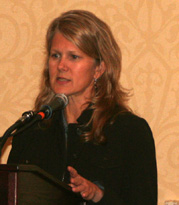 Dr. Anderson's academic background includes Child Neurology training under the direction of Dr. Ian Butler at the University
of Texas Health Science Center in Houston, TX. This was followed by post-doctoral training in clinical neurophysiology under
the direction of Dr. Peter Kellaway and translational epilepsy research under the mentorship of Dr. John Swann in the Cain
Foundation Laboratories at Texas Children's Hospital, Baylor College of Medicine, Houston, TX. At present, Dr. Anderson is
an Assistant Professor in the Departments of Pediatrics, Neurology, and Neuroscience at Baylor College of Medicine. Dr. Anderson
has a translational epilepsy research program funded through NIH/NINDS and the Partnership for Pediatric Epilepsy Research.
She is a previous recipient of the Clinician Scientist Development Award and the Independent Scientist Award from NIH/NINDS.
Dr. Anderson is involved in the Clinical Neurophysiology service and Epilepsy Monitoring Unit at Texas Children's Hospital
and several other hospitals affiliated with Baylor College of Medicine. Dr. Anderson has an independent research program in
the Cain Foundation Labs, which is focused on basic mechanisms involved in epileptogenesis with a particular emphasis on understanding
the role of ion channel modulation in epilepsy. The work in her lab is focused on post-translational modifications of ion
channels as candidate mechanisms for altering channel function and expression in neurons involved in seizure-prone circuits.
Dr. Anderson is married to an attorney, James Rytting and they have two sons, Tobias (3 years) and Mattias (2 years). In addition,
to keeping busy with career and family, Dr. Anderson enjoys running with her two dogs and playing oboe and English horn in
the Doctor's Orchestra of Houston.
Dr. Anderson's academic background includes Child Neurology training under the direction of Dr. Ian Butler at the University
of Texas Health Science Center in Houston, TX. This was followed by post-doctoral training in clinical neurophysiology under
the direction of Dr. Peter Kellaway and translational epilepsy research under the mentorship of Dr. John Swann in the Cain
Foundation Laboratories at Texas Children's Hospital, Baylor College of Medicine, Houston, TX. At present, Dr. Anderson is
an Assistant Professor in the Departments of Pediatrics, Neurology, and Neuroscience at Baylor College of Medicine. Dr. Anderson
has a translational epilepsy research program funded through NIH/NINDS and the Partnership for Pediatric Epilepsy Research.
She is a previous recipient of the Clinician Scientist Development Award and the Independent Scientist Award from NIH/NINDS.
Dr. Anderson is involved in the Clinical Neurophysiology service and Epilepsy Monitoring Unit at Texas Children's Hospital
and several other hospitals affiliated with Baylor College of Medicine. Dr. Anderson has an independent research program in
the Cain Foundation Labs, which is focused on basic mechanisms involved in epileptogenesis with a particular emphasis on understanding
the role of ion channel modulation in epilepsy. The work in her lab is focused on post-translational modifications of ion
channels as candidate mechanisms for altering channel function and expression in neurons involved in seizure-prone circuits.
Dr. Anderson is married to an attorney, James Rytting and they have two sons, Tobias (3 years) and Mattias (2 years). In addition,
to keeping busy with career and family, Dr. Anderson enjoys running with her two dogs and playing oboe and English horn in
the Doctor's Orchestra of Houston.
Scott C. Baraban, Ph.D.
University of California, San Francisco
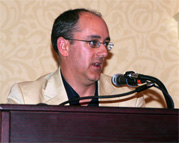 Scott C. Baraban, Ph.D. is Associate Professor of Neurological Surgery and member of the Graduate Programs in Neuroscience
and Biomedical Sciences at UCSF. Dr. Baraban graduated from Johns Hopkins University, completed a doctoral thesis in Pharmacology
at University of Virginia, and postdoctoral study with Phil Schwartzkroin at University of Washington. Following training,
he obtained a tenure-track faculty position in Pediatrics and Neuroscience at Case Western University, and was recruited to
the University of California, San Francisco two years later. As a postdoctoral fellow, Dr. Baraban, was one of the first to
study animal models of malformation-associated epilepsy. This work, initially focused on the MAM rat model, has resulted in
the identification of ion channel and synaptic deficits that directly contribute to hyperexcitability in a malformed brain.
In recent years, this line of study has extended to analysis of human tissue samples obtained at surgery from patients with
focal cortical dysplasia and tuberous sclerosis complex. Following early postdoctoral publications on neuropeptide Y, Dr.
Baraban has maintained a continued interest in the role of interneurons in epilepsy and recently teamed with Drs. Arturo Alvarez-Buylla
and John Rubenstein to develop strategies for the generation of new GABAergic interneurons. His laboratory is also the first
group to study epilepsy using zebrafish and recently completed a large-scale forward-genetic mutagenesis screen to identify
"seizure resistant" mutants. Dr. Baraban has been active in young investigator mentorship programs. As co-founder, with Dr.
France Jensen, they started the AES Fellows Reception in 2000 and he chaired the AES Junior Investigators SIG for the first
three years. He currently serves as a member of the Epilepsy Foundation of America Professional Advisory Board and AES Research
& Training committee. He is a regular member of Developmental Brain Disorders NIH Study Section and also reviews grant applications
for EFA, C.U.R.E., Partnership for Pediatric Epilepsy Research and Congressional Directed Research Program on TSC. Among other
honors, he has received the Basil O'Connor Award and the Klingenstein Fellowship. He has published over 50 peer-reviewed manuscripts,
including papers in the journals Science, Nature Neuroscience, and Journal of Neuroscience.
Scott C. Baraban, Ph.D. is Associate Professor of Neurological Surgery and member of the Graduate Programs in Neuroscience
and Biomedical Sciences at UCSF. Dr. Baraban graduated from Johns Hopkins University, completed a doctoral thesis in Pharmacology
at University of Virginia, and postdoctoral study with Phil Schwartzkroin at University of Washington. Following training,
he obtained a tenure-track faculty position in Pediatrics and Neuroscience at Case Western University, and was recruited to
the University of California, San Francisco two years later. As a postdoctoral fellow, Dr. Baraban, was one of the first to
study animal models of malformation-associated epilepsy. This work, initially focused on the MAM rat model, has resulted in
the identification of ion channel and synaptic deficits that directly contribute to hyperexcitability in a malformed brain.
In recent years, this line of study has extended to analysis of human tissue samples obtained at surgery from patients with
focal cortical dysplasia and tuberous sclerosis complex. Following early postdoctoral publications on neuropeptide Y, Dr.
Baraban has maintained a continued interest in the role of interneurons in epilepsy and recently teamed with Drs. Arturo Alvarez-Buylla
and John Rubenstein to develop strategies for the generation of new GABAergic interneurons. His laboratory is also the first
group to study epilepsy using zebrafish and recently completed a large-scale forward-genetic mutagenesis screen to identify
"seizure resistant" mutants. Dr. Baraban has been active in young investigator mentorship programs. As co-founder, with Dr.
France Jensen, they started the AES Fellows Reception in 2000 and he chaired the AES Junior Investigators SIG for the first
three years. He currently serves as a member of the Epilepsy Foundation of America Professional Advisory Board and AES Research
& Training committee. He is a regular member of Developmental Brain Disorders NIH Study Section and also reviews grant applications
for EFA, C.U.R.E., Partnership for Pediatric Epilepsy Research and Congressional Directed Research Program on TSC. Among other
honors, he has received the Basil O'Connor Award and the Klingenstein Fellowship. He has published over 50 peer-reviewed manuscripts,
including papers in the journals Science, Nature Neuroscience, and Journal of Neuroscience.
John J. Barry, M.D.
Stanford University Medical Center
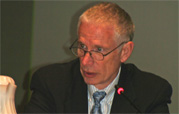 John J. Barry, M.D. is an Associate Professor of Psychiatry and Behavioral Sciences at Stanford University Medical Center
where he is the Director of the Neuropsychiatry and Individual Psychotherapy Therapy Clinics. His major interest is in the
interface of medical, especially neurological, illnesses and psychiatric disorders. Dr. Barry graduated from Dartmouth College
and completed his medical training at Downstate Medical Center and has completed residences in both Internal Medicine and
Psychiatry. He has also completed fellowships in Infectious Diseases and Geriatric Psychiatry. He has been interested in affective
disorders, especially those that are refractory to treatment and has been involved in research with novel interventions for
the amelioration of these disorders. For the last 20 years, Dr. Barry has specialized in the diagnosis and treatment of psychiatric
illnesses in people with epilepsy. Of particular interest has been the recognition and treatment of affective disorders in
people with epilepsy. Dr. Barry has published extensively in this area. He has been the co-chair of the Depression Initiative
for the Epilepsy Foundation and has been on the Board of Directors for this organization for the last 5 years. In addition,
Dr. Barry has also been interested in the diagnosis and treatment of people with non-epileptic seizures.
John J. Barry, M.D. is an Associate Professor of Psychiatry and Behavioral Sciences at Stanford University Medical Center
where he is the Director of the Neuropsychiatry and Individual Psychotherapy Therapy Clinics. His major interest is in the
interface of medical, especially neurological, illnesses and psychiatric disorders. Dr. Barry graduated from Dartmouth College
and completed his medical training at Downstate Medical Center and has completed residences in both Internal Medicine and
Psychiatry. He has also completed fellowships in Infectious Diseases and Geriatric Psychiatry. He has been interested in affective
disorders, especially those that are refractory to treatment and has been involved in research with novel interventions for
the amelioration of these disorders. For the last 20 years, Dr. Barry has specialized in the diagnosis and treatment of psychiatric
illnesses in people with epilepsy. Of particular interest has been the recognition and treatment of affective disorders in
people with epilepsy. Dr. Barry has published extensively in this area. He has been the co-chair of the Depression Initiative
for the Epilepsy Foundation and has been on the Board of Directors for this organization for the last 5 years. In addition,
Dr. Barry has also been interested in the diagnosis and treatment of people with non-epileptic seizures.
Jocelyn Bautista, M.D.
Cleveland Clinic
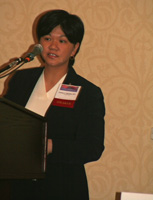 Jocelyn F. Bautista, M.D. is Assistant Professor of Medicine at Cleveland Clinic Lerner College of Medicine. Dr. Bautista
graduated from University of Illinois, completed medical school at Washington University School of Medicine and internship
and neurology residency training at Yale University School of Medicine. Following residency training Dr. Bautista completed
a two-year clinical fellowship in epilepsy and clinical neurophysiology at Cleveland Clinic. Upon completing her epilepsy
fellowship she received an American Academy of Neurology clinical research training fellowship award to begin her own study
of familial epilepsy and to pursue training in genetic epidemiology at Case Western Reserve University. This work resulted
in a Nature Genetics paper identifying a gene responsible for a familial syndrome of generalized epilepsy and paroxysmal dyskinesia.
In 2005 she received an NIH mentored patient-oriented research career development award (K23) from NINDS to pursue further
training and research in the complex genetics of human epilepsies.
Jocelyn F. Bautista, M.D. is Assistant Professor of Medicine at Cleveland Clinic Lerner College of Medicine. Dr. Bautista
graduated from University of Illinois, completed medical school at Washington University School of Medicine and internship
and neurology residency training at Yale University School of Medicine. Following residency training Dr. Bautista completed
a two-year clinical fellowship in epilepsy and clinical neurophysiology at Cleveland Clinic. Upon completing her epilepsy
fellowship she received an American Academy of Neurology clinical research training fellowship award to begin her own study
of familial epilepsy and to pursue training in genetic epidemiology at Case Western Reserve University. This work resulted
in a Nature Genetics paper identifying a gene responsible for a familial syndrome of generalized epilepsy and paroxysmal dyskinesia.
In 2005 she received an NIH mentored patient-oriented research career development award (K23) from NINDS to pursue further
training and research in the complex genetics of human epilepsies.
Anne T. Berg, Ph,D.
Northern Illinois University
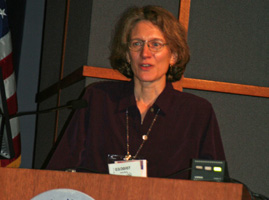 Dr. Berg received her bachelor's degree at Cornell University where she worked with Professor Barbara Finlay on programmed
cell death in the developing mammalian visual system. She received her Ph.D. in perinatal epidemiology from Yale University
in 1986. She has focused her research on the clinical epidemiology of seizure disorders with an emphasis on delineating short
and long-term seizure outcomes as well as behavioral, cognitive, and social co-morbidities frequently associated with epilepsy.
Her research has encompassed the prognosis following febrile seizures and their relation to new onset epilepsy and their prognostic
significance with respect to intractable epilepsy and the outcomes of epilepsy surgery, the prognosis following a first unprovoked
seizure, the role of syndromes in studying seizure and other outcomes in epilepsy, intractable epilepsy, and epilepsy surgery.
Methodological work has included development of definitions for studying intractable epilepsy and the application of Markov
processes to the study of the complex remitting-relapsing course of childhood epilepsy. In collaboration with scientists at
the Brain Research Institute in Melbourne, Australia, she is studying early imaging markers and clinical correlated of mesial
temporal lobe epilepsy as well as studying long-term social, educational, and behavioral difficulties in young adults who
had epilepsy as children. Currently she is an associate editor of Epilepsia and the Chair of the ILAE Commission on Classification
and Terminology.
Dr. Berg received her bachelor's degree at Cornell University where she worked with Professor Barbara Finlay on programmed
cell death in the developing mammalian visual system. She received her Ph.D. in perinatal epidemiology from Yale University
in 1986. She has focused her research on the clinical epidemiology of seizure disorders with an emphasis on delineating short
and long-term seizure outcomes as well as behavioral, cognitive, and social co-morbidities frequently associated with epilepsy.
Her research has encompassed the prognosis following febrile seizures and their relation to new onset epilepsy and their prognostic
significance with respect to intractable epilepsy and the outcomes of epilepsy surgery, the prognosis following a first unprovoked
seizure, the role of syndromes in studying seizure and other outcomes in epilepsy, intractable epilepsy, and epilepsy surgery.
Methodological work has included development of definitions for studying intractable epilepsy and the application of Markov
processes to the study of the complex remitting-relapsing course of childhood epilepsy. In collaboration with scientists at
the Brain Research Institute in Melbourne, Australia, she is studying early imaging markers and clinical correlated of mesial
temporal lobe epilepsy as well as studying long-term social, educational, and behavioral difficulties in young adults who
had epilepsy as children. Currently she is an associate editor of Epilepsia and the Chair of the ILAE Commission on Classification
and Terminology.
Amy Brooks-Kayal, M.D.
University of Pennsylvania
Children's Hospital of Philadelphia
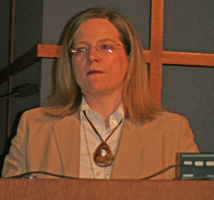 Amy Brooks-Kayal, M.D. is an Associate Professor of Neurology and Pediatrics at the University of Pennsylvania, and attending
physician in the Pediatric Regional Epilepsy Program and is Co-Director of the Pediatric Epilepsy Research Program at the
Children's Hospital of Philadelphia. Dr. Brooks-Kayal obtained her BA from Cornell University and MD from Johns Hopkins University
School of Medicine. Following her residency in Pediatrics at Children's Hospital of Philadelphia, she pursued a postdoctoral
fellowship in Neuroscience with Dr. Dolan Pritchett at University of Pennsylvania and then completed Neurology training at
the Hospital of the University of Pennsylvania and the Children's Hospital of Philadelphia. The emphasis of Dr. Brooks-Kayal's
research has been on identifying the molecular mechanisms underlying the development of epilepsy in both the mature and developing
brains, particularly focusing on changes in neurotransmitter receptors that may be critical contributors to epileptogenesis.
Her work has been published in journals such as Nature Medicine, the Proceedings of the National Academy of Science, the Journal
of Biological Chemistry and the Journal of Neuroscience. The goal of her studies is the discovery of new therapeutic targets
for the prevention and treatment of epilepsy in the developing and mature brain. Dr. Brooks-Kayal has made numerous contributions
as a physician-scientist to professional development and training in epilepsy. She has mentored numerous students, residents
and fellows engaged in clinical and research training in epilepsy. She serves on the Board of Directors of the American Epilepsy
Society (AES), and served as the Scientific Program Chair for the AES meeting in 2005. She also serves on the Research Council
of the Epilepsy Foundation, the Scientific Advisory Boards of CURE and the National Epifellows foundation, the program committee
of the Society for Neuroscience and is an Associate Editor for the journal Epilepsia. She has also participated in numerous
NIH study sections, monitoring boards and workshops related to epilepsy.
Amy Brooks-Kayal, M.D. is an Associate Professor of Neurology and Pediatrics at the University of Pennsylvania, and attending
physician in the Pediatric Regional Epilepsy Program and is Co-Director of the Pediatric Epilepsy Research Program at the
Children's Hospital of Philadelphia. Dr. Brooks-Kayal obtained her BA from Cornell University and MD from Johns Hopkins University
School of Medicine. Following her residency in Pediatrics at Children's Hospital of Philadelphia, she pursued a postdoctoral
fellowship in Neuroscience with Dr. Dolan Pritchett at University of Pennsylvania and then completed Neurology training at
the Hospital of the University of Pennsylvania and the Children's Hospital of Philadelphia. The emphasis of Dr. Brooks-Kayal's
research has been on identifying the molecular mechanisms underlying the development of epilepsy in both the mature and developing
brains, particularly focusing on changes in neurotransmitter receptors that may be critical contributors to epileptogenesis.
Her work has been published in journals such as Nature Medicine, the Proceedings of the National Academy of Science, the Journal
of Biological Chemistry and the Journal of Neuroscience. The goal of her studies is the discovery of new therapeutic targets
for the prevention and treatment of epilepsy in the developing and mature brain. Dr. Brooks-Kayal has made numerous contributions
as a physician-scientist to professional development and training in epilepsy. She has mentored numerous students, residents
and fellows engaged in clinical and research training in epilepsy. She serves on the Board of Directors of the American Epilepsy
Society (AES), and served as the Scientific Program Chair for the AES meeting in 2005. She also serves on the Research Council
of the Epilepsy Foundation, the Scientific Advisory Boards of CURE and the National Epifellows foundation, the program committee
of the Society for Neuroscience and is an Associate Editor for the journal Epilepsia. She has also participated in numerous
NIH study sections, monitoring boards and workshops related to epilepsy.
Rochelle Caplan, M.D.
UCLA Department of Psychiatry
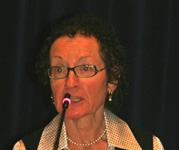 Rochelle Caplan, M.D., is professor of psychiatry in the UCLA Department of Psychiatry and director of the UCLA Pediatric
Neuropsychiatry program. She completed her medical studies at the Jerusalem University Hadassah Medical School and her training
in adult and child psychiatry at the Tel-Aviv University Sackler Medical School. She has conducted NIH-funded studies on the
development of thinking and discourse skills in children with neurobehavioral disorders, such as childhood schizophrenia and
pediatric epilepsy. She has developed instruments for studying higher-level linguistic processing deficits (i.e., thought
disorder) in children and has conducted studies of thought disorder in children with schizophrenia and schizophrenia spectrum
disorders, epilepsy, attention-deficit hyperactivity disorder, high functioning autistic disorder, and in normal children.
She has also studied psychopathology, cognition, and language in medically and surgically treated children with epilepsy,
as well as obstacles to mental health care in these children. More recently, she has conducted studies on the neuroanatomical
basis of thought disorder in children using functional and structural magnetic resonance imaging. Dr. Caplan serves on the
editorial board of Epilepsy and Behavior and as chair of an Epilepsy Foundation of America Steering Committee on Mood Disorders
in Children with Epilepsy and NINDS/NIMH committee on pediatric nonepileptic seizures. She has received national, departmental,
and community awards in recognition of her work.
Rochelle Caplan, M.D., is professor of psychiatry in the UCLA Department of Psychiatry and director of the UCLA Pediatric
Neuropsychiatry program. She completed her medical studies at the Jerusalem University Hadassah Medical School and her training
in adult and child psychiatry at the Tel-Aviv University Sackler Medical School. She has conducted NIH-funded studies on the
development of thinking and discourse skills in children with neurobehavioral disorders, such as childhood schizophrenia and
pediatric epilepsy. She has developed instruments for studying higher-level linguistic processing deficits (i.e., thought
disorder) in children and has conducted studies of thought disorder in children with schizophrenia and schizophrenia spectrum
disorders, epilepsy, attention-deficit hyperactivity disorder, high functioning autistic disorder, and in normal children.
She has also studied psychopathology, cognition, and language in medically and surgically treated children with epilepsy,
as well as obstacles to mental health care in these children. More recently, she has conducted studies on the neuroanatomical
basis of thought disorder in children using functional and structural magnetic resonance imaging. Dr. Caplan serves on the
editorial board of Epilepsy and Behavior and as chair of an Epilepsy Foundation of America Steering Committee on Mood Disorders
in Children with Epilepsy and NINDS/NIMH committee on pediatric nonepileptic seizures. She has received national, departmental,
and community awards in recognition of her work.
Barry W. Connors, Ph.D.
Brown University
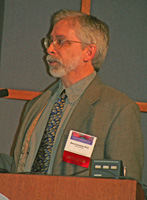 Barry Connors is Professor and Chairman of the Dept. of Neuroscience, and L. Herbert Ballou University Professor in the Division
of Biology & Medicine at Brown University. Dr. Connors received his doctoral degree at Duke University in physiology and pharmacology,
then did postdoctoral work in neuroscience at Stanford University as a William G. Lennox Fellow. He served on the Stanford
faculty in the Dept. of Neurology for five years, and moved to Brown University in 1987. Dr. Connors research has focused
on the physiology of neurons, synapses, and circuits in the mammalian brain, especially the cerebral cortex. He was one of
the first to describe the intrinsic electrical properties of neocortical neurons, and he has also studied the diverse functions
of excitatory and inhibitory synapses in the neocortex. His research on mechanisms of experimental seizures revealed that
a particular type of neuron often initiates seizure discharge, and that there are specific neural pathways by which seizures
can propagate through the neocortex. In recent years, Dr. Connors has focused on the inhibitory processes of the forebrain,
and his group discovered that the inhibitory neurons of the cortex and thalamus communicate extensively via electrical synapses.
In recognition of his research on the functions of central neurons and circuits, Dr. Connors has received a Klingenstein Fellowship
in the Neurosciences, a Research Career Development Award from NINDS, and a Javits Neuroscience Investigator Award from NIH.
He is an Associate of the Neuroscience Research Program, and a former Senior Editor of the Journal of Neuroscience. Dr. Connors
is also a coauthor, with Mark Bear and Michael Paradiso, of the bestselling undergraduate textbook Neuroscience: Exploring
the Brain.
Barry Connors is Professor and Chairman of the Dept. of Neuroscience, and L. Herbert Ballou University Professor in the Division
of Biology & Medicine at Brown University. Dr. Connors received his doctoral degree at Duke University in physiology and pharmacology,
then did postdoctoral work in neuroscience at Stanford University as a William G. Lennox Fellow. He served on the Stanford
faculty in the Dept. of Neurology for five years, and moved to Brown University in 1987. Dr. Connors research has focused
on the physiology of neurons, synapses, and circuits in the mammalian brain, especially the cerebral cortex. He was one of
the first to describe the intrinsic electrical properties of neocortical neurons, and he has also studied the diverse functions
of excitatory and inhibitory synapses in the neocortex. His research on mechanisms of experimental seizures revealed that
a particular type of neuron often initiates seizure discharge, and that there are specific neural pathways by which seizures
can propagate through the neocortex. In recent years, Dr. Connors has focused on the inhibitory processes of the forebrain,
and his group discovered that the inhibitory neurons of the cortex and thalamus communicate extensively via electrical synapses.
In recognition of his research on the functions of central neurons and circuits, Dr. Connors has received a Klingenstein Fellowship
in the Neurosciences, a Research Career Development Award from NINDS, and a Javits Neuroscience Investigator Award from NIH.
He is an Associate of the Neuroscience Research Program, and a former Senior Editor of the Journal of Neuroscience. Dr. Connors
is also a coauthor, with Mark Bear and Michael Paradiso, of the bestselling undergraduate textbook Neuroscience: Exploring
the Brain.
April Cooper
 A mother of twins, April worries about her children's future. Seven-year-old Abigail and Amelia have tuberous sclerosis (TS),
a genetic condition in which tumors grow uncontrollably throughout the body and are thought to cause epileptic seizures. These
tumors can go on to affect the brain, kidneys, heart, lungs, and eyes. When Amelia was two weeks old she started having seizures
caused by the tumors. Over the next two years, Amelia had many different kinds of seizures, some of them quite severe. According
to her mother, this eventually affected her growth and development. Through advances in diagnostics, Amelia was found to be
a good candidate for a tuber resection, which is a type of brain surgery. Due to the successful procedure and finding the
right drug regimen, she has been seizure free for nearly five years. Since Abigail is Amelia's identical twin, both girls
have TS. However, Abigail has not had the same problem with epileptic seizures, and her last seizure was six years ago. Abigail
did have her own brain surgery to remove a tumor that was growing and threatening her overall health. While the surgery was
successful, there is always a concern that a tumor might return. Sophisticated brain scans on the girls indicate that TS has
affected as much as one half of both Amelia's and Abigail's brains. April's concern is that, due to the damage caused by her
seizures, Amelia, will not likely ever fully recover or live as an independent adult. Abigail, on the other hand, has not
suffered as much developmentally as Amelia. Looking at them both, April admits no one knows what the future might hold but
she is committed to finding a way to help others from suffering the devastation of this disease.
A mother of twins, April worries about her children's future. Seven-year-old Abigail and Amelia have tuberous sclerosis (TS),
a genetic condition in which tumors grow uncontrollably throughout the body and are thought to cause epileptic seizures. These
tumors can go on to affect the brain, kidneys, heart, lungs, and eyes. When Amelia was two weeks old she started having seizures
caused by the tumors. Over the next two years, Amelia had many different kinds of seizures, some of them quite severe. According
to her mother, this eventually affected her growth and development. Through advances in diagnostics, Amelia was found to be
a good candidate for a tuber resection, which is a type of brain surgery. Due to the successful procedure and finding the
right drug regimen, she has been seizure free for nearly five years. Since Abigail is Amelia's identical twin, both girls
have TS. However, Abigail has not had the same problem with epileptic seizures, and her last seizure was six years ago. Abigail
did have her own brain surgery to remove a tumor that was growing and threatening her overall health. While the surgery was
successful, there is always a concern that a tumor might return. Sophisticated brain scans on the girls indicate that TS has
affected as much as one half of both Amelia's and Abigail's brains. April's concern is that, due to the damage caused by her
seizures, Amelia, will not likely ever fully recover or live as an independent adult. Abigail, on the other hand, has not
suffered as much developmentally as Amelia. Looking at them both, April admits no one knows what the future might hold but
she is committed to finding a way to help others from suffering the devastation of this disease.
Gabriella D'Arcangelo, Ph.D.
Baylor College of Medicine
Gabriella D'Arcangelo, Ph.D. is an Assistant Professor of Pediatrics, Neuroscience, Developmental Biology, and Translational Biology and Molecular Medicine at Baylor College of Medicine, and Principal Investigator in The Cain Foundation Laboratories at Texas Children's Hospital. Dr. D'Arcangelo graduated from the Universita' degli Studi, Bari, Italy, completed doctoral training in Neurobiology at the State University of New York at Stony Brook, NY, and postdoctoral studies in Developmental neurobiology at the Roche Institute of Molecular Biology, Nutley, NJ, and St Jude Children's Research Hospital, Memphis, TN. Dr. D'Arcangelo has made significant contributions to our understanding of mammalian brain development using the mouse as a model system. During her postdoctoral training she identified reelin, a gene crucial for cellular layer formation in the brain and absent in the classical neurological mutant mouse strain reeler. This discovery had a profound impact of the field of developmental neurobiology, and resulted in a better knowledge of the molecular mechanisms governing neuronal migration in the brain. As an independent investigator, she continued to explored novel functions of Reelin in central nervous system, such as its role in neuronal maturation and synaptic development in the postnatal brain. These studies may provide the biological framework to understand the involvement of Reelin in cognitive diseases such as schizophrenia and autism. More recently, Dr. D'Arcangelo has focused her attention on cortical dysplasia, a form of childhood epilepsy associated with brain malformations. She identified the PI3K-mTOR as a molecular pathway altered in regions of abnormality and characterized a mouse model that is now being used to develop novel antiepileptic treatments. Dr. D'Arcangelo has received major research funding from the NICHD and NINDS, and several awards for her basic studies of brain development including a Basil O'Connor Starter Scholar Research Award and a NARSAD Young investigator award. She also received grants from the Epilepsy Foundation and CURE for her work on epilepsy. Her work has been published in several high profile scientific journals, including Nature, Neuron, Nature Genetics and the Annals of Neurology.
John P. Donoghue, Ph.D.
Brown University
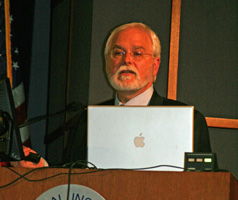 John P. Donoghue, Ph.D. is the Henry Merritt Wriston Professor at Brown University. From 1991 through 2006, Dr. Donoghue
was chairman of the Department of Neuroscience, and since 1998 he has served as director of the Brain Science Program at Brown
University, which brings together more than 10 departments and 100 faculty into a unique research and education program. Dr.
Donoghue has performed over 20 years of research on brain computer interfaces and his laboratory is internationally recognized
as a leader in this field. His research has been funded by the National Institutes of Health (NIH), the National Science Foundation
(NSF), and the Defense Advanced Research Projects Agency (DARPA), as well as private foundations. Dr. Donoghue has over 50
publications, including a number in leading journals such as Nature, Science and The Journal of Neuroscience, and he has served
on many external advisory panels, including those for the NIH's Neurology and Mental Health institutes and the space medicine
panel of the National Aeronautics and Space Administration (NASA). In addition, he is co-founder, chief scientific officer
and director of Cyberkinetics, Inc., a biotech startup that is developing brain implants to restore movements to paralyzed
individuals.Dr. Donoghue received an A.B. from Boston University in 1971, an M.S. in Anatomy from the University of Vermont
in 1976, and a Ph.D. in Neuroscience from Brown University in 1979.
John P. Donoghue, Ph.D. is the Henry Merritt Wriston Professor at Brown University. From 1991 through 2006, Dr. Donoghue
was chairman of the Department of Neuroscience, and since 1998 he has served as director of the Brain Science Program at Brown
University, which brings together more than 10 departments and 100 faculty into a unique research and education program. Dr.
Donoghue has performed over 20 years of research on brain computer interfaces and his laboratory is internationally recognized
as a leader in this field. His research has been funded by the National Institutes of Health (NIH), the National Science Foundation
(NSF), and the Defense Advanced Research Projects Agency (DARPA), as well as private foundations. Dr. Donoghue has over 50
publications, including a number in leading journals such as Nature, Science and The Journal of Neuroscience, and he has served
on many external advisory panels, including those for the NIH's Neurology and Mental Health institutes and the space medicine
panel of the National Aeronautics and Space Administration (NASA). In addition, he is co-founder, chief scientific officer
and director of Cyberkinetics, Inc., a biotech startup that is developing brain implants to restore movements to paralyzed
individuals.Dr. Donoghue received an A.B. from Boston University in 1971, an M.S. in Anatomy from the University of Vermont
in 1976, and a Ph.D. in Neuroscience from Brown University in 1979.
Jerome Engel, Jr., MD, PhD
David Geffen School of Medicine at UCLA
Jerome Engel, Jr., MD, PhD, is the Jonathan Sinay Distinguished Professor of Neurology, Neurobiology, and Psychiatry and Biobehavioral Sciences at the David Geffen School of Medicine at UCLA, Chief of Epilepsy and Clinical Neurophysiology at the UCLA Center for the Health Sciences, Director of the UCLA Seizure Disorder Center, and a member of the Brain Research Institute. He received his undergraduate degree from Cornell University in 1960, his advanced degrees from Stanford University in 1965 and 1966, and completed his training in neurology at Albert Einstein College of Medicine in 1972. Dr. Engel is past president of the American Clinical Neurophysiology Society (ACNS), the American Epilepsy Society (AES), and the International League against Epilepsy (ILAE), and is past co-chair of the World Health Organization (WHO) Global Campaign against Epilepsy. His bibliography lists over 900 papers and 25 books, including the definitive Epilepsy: A Comprehensive Textbook and Surgical Treatment of the Epilepsies. He is principal investigator on three research grants from the National Institute of Neurological Disorders and Stroke (NINDS), and has received numerous awards and honors, including a Fulbright Scholarship, a Guggenheim Fellowship, and the Javits Award from the NINDS.
Gerald D. Fischbach, M.D.
Columbia University Medical Center
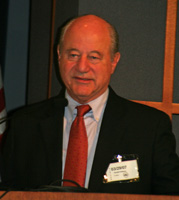 Gerald D. Fischbach, M.D. is the John E. Borne Professor of Medical and Surgical Research at Columbia University Medical
Center. He also holds the position of Scientific Director of The Simons Foundation. Dr. Fischbach is the former Executive
Vice President for Health and Biomedical Sciences, and Dean of the Faculties of Health Sciences and Medicine at Columbia University,
and is also the former Director of the National Institute of Neurological Disorders and Stroke of the National Institutes
of Health. Throughout his career, Dr. Fischbach has studied the formation and maintenance of synapses, the communicating junctions
between nerve cells and their targets through which information, coded in electrical impulses, is transferred. He pioneered
the use of nerve cell cultures to study the electrophysiology, morphology, and biochemistry of developing nerve - muscle and
inter-neuronal synapses. His current research is focused on roles that neuregulins play in neurogenesis, synapse formation,
and neuronal survival. After receiving his M.D. degree from Cornell University and interning at the University of Washington
Hospital in Seattle, Dr. Fischbach began his research career at the NIH in 1966. He joined the faculty of Harvard Medical
School in the Department of Pharmacology in 1973. From 1981 - 1990, Dr. Fischbach was the Edison Professor of Neurobiology
and Head of the Department of Anatomy and Neurobiology at Washington University School of Medicine. In 1990, he returned to
Harvard Medical School as the Nathan Marsh Pusey Professor of Neurobiology and Chairman of the Neurobiology Departments of
Harvard Medical School and Massachusetts General Hospital. He served as Director of the National Institute of Neurological
Disorders and Stroke, National Institutes of Health from 1998 - 2001. Dr. Fischbach is a past-President of the Society of
Neuroscience, and he now serves on several medical and scientific advisory boards. He is a member of the National Academy
of Sciences, the American Academy of Arts and Sciences and the Institute of Medicine. He is a Fellow of the American Association
for the Advancement of Science and a Non-resident Fellow of the Salk Institute.
Gerald D. Fischbach, M.D. is the John E. Borne Professor of Medical and Surgical Research at Columbia University Medical
Center. He also holds the position of Scientific Director of The Simons Foundation. Dr. Fischbach is the former Executive
Vice President for Health and Biomedical Sciences, and Dean of the Faculties of Health Sciences and Medicine at Columbia University,
and is also the former Director of the National Institute of Neurological Disorders and Stroke of the National Institutes
of Health. Throughout his career, Dr. Fischbach has studied the formation and maintenance of synapses, the communicating junctions
between nerve cells and their targets through which information, coded in electrical impulses, is transferred. He pioneered
the use of nerve cell cultures to study the electrophysiology, morphology, and biochemistry of developing nerve - muscle and
inter-neuronal synapses. His current research is focused on roles that neuregulins play in neurogenesis, synapse formation,
and neuronal survival. After receiving his M.D. degree from Cornell University and interning at the University of Washington
Hospital in Seattle, Dr. Fischbach began his research career at the NIH in 1966. He joined the faculty of Harvard Medical
School in the Department of Pharmacology in 1973. From 1981 - 1990, Dr. Fischbach was the Edison Professor of Neurobiology
and Head of the Department of Anatomy and Neurobiology at Washington University School of Medicine. In 1990, he returned to
Harvard Medical School as the Nathan Marsh Pusey Professor of Neurobiology and Chairman of the Neurobiology Departments of
Harvard Medical School and Massachusetts General Hospital. He served as Director of the National Institute of Neurological
Disorders and Stroke, National Institutes of Health from 1998 - 2001. Dr. Fischbach is a past-President of the Society of
Neuroscience, and he now serves on several medical and scientific advisory boards. He is a member of the National Academy
of Sciences, the American Academy of Arts and Sciences and the Institute of Medicine. He is a Fellow of the American Association
for the Advancement of Science and a Non-resident Fellow of the Salk Institute.
David Neal Franz, MD
Cincinnati Children's Hospital Medical Center
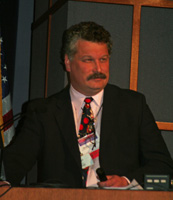 David Neal Franz, MD is Professor of Pediatrics and Neurology, Associate Director of Clinical Affairs, and Director of the
Tuberous Sclerosis Clinic in the Division of Neurology at University of Cincinnati College of Medicine. Dr. Franz was born
and raised in Dayton, Ohio. He received his undergraduate degree in History and Literature from Earlham College in Richmond,
Indiana. He attended medical school at the Ohio State University, and completed post-graduate training at Wright State University
and the University of Cincinnati. He then served as Assistant Professor of Neurology and Pediatrics at Wright State University
before returning to Cincinnati Children's Hospital Medical Center. His areas of expertise include tuberous sclerosis, neuropharmacology,
ketogenic diet, epilepsy, and general pediatric neurology. He has a large general pediatric neurology outpatient practice.
Dr. Franz established the Cincinnati Tuberous Sclerosis Clinic in 1993, to assist in the medical care of patients who have
or are suspected of having tuberous sclerosis. Approximately 450 adults and children with TSC are followed in the clinic.
Specialists in psychiatry, dermatology, pulmonary medicine, internal medicine, human genetics, nephrology, and cardiology
actively participate in TSC related clinical and research activities. The purpose of the clinic is not to replace care from
the patient's pediatrician or family physician, but to assist the primary care physician in dealing with those aspects unique
to tuberous sclerosis that affect the child's health or development. Patients are seen without regard to their financial status
or ability to pay. Important research collaborations exist with Dr. George Thomas, at the University of Cincinnati's Genome
Research Institute, Dr. David Kwiatkowski of Brigham and Women's Hospital, and Dr. Pier Paolo Pandolfi of Memorial Sloan Kettering
Institute. Dr. Franz serves as a member of the Scientific Advisory Board and the Board of Directors for the Tuberous Sclerosis
Alliance and the Professional Advisory Board for the LAM Foundation. He was voted Best Doctors in America Pediatrics and Neurology
for the past five years, and most recently was the recipient of the Gomez Award in 2006 for his scientific and humanitarian
efforts to find a cure for TSC while improving the lives of those affected.
David Neal Franz, MD is Professor of Pediatrics and Neurology, Associate Director of Clinical Affairs, and Director of the
Tuberous Sclerosis Clinic in the Division of Neurology at University of Cincinnati College of Medicine. Dr. Franz was born
and raised in Dayton, Ohio. He received his undergraduate degree in History and Literature from Earlham College in Richmond,
Indiana. He attended medical school at the Ohio State University, and completed post-graduate training at Wright State University
and the University of Cincinnati. He then served as Assistant Professor of Neurology and Pediatrics at Wright State University
before returning to Cincinnati Children's Hospital Medical Center. His areas of expertise include tuberous sclerosis, neuropharmacology,
ketogenic diet, epilepsy, and general pediatric neurology. He has a large general pediatric neurology outpatient practice.
Dr. Franz established the Cincinnati Tuberous Sclerosis Clinic in 1993, to assist in the medical care of patients who have
or are suspected of having tuberous sclerosis. Approximately 450 adults and children with TSC are followed in the clinic.
Specialists in psychiatry, dermatology, pulmonary medicine, internal medicine, human genetics, nephrology, and cardiology
actively participate in TSC related clinical and research activities. The purpose of the clinic is not to replace care from
the patient's pediatrician or family physician, but to assist the primary care physician in dealing with those aspects unique
to tuberous sclerosis that affect the child's health or development. Patients are seen without regard to their financial status
or ability to pay. Important research collaborations exist with Dr. George Thomas, at the University of Cincinnati's Genome
Research Institute, Dr. David Kwiatkowski of Brigham and Women's Hospital, and Dr. Pier Paolo Pandolfi of Memorial Sloan Kettering
Institute. Dr. Franz serves as a member of the Scientific Advisory Board and the Board of Directors for the Tuberous Sclerosis
Alliance and the Professional Advisory Board for the LAM Foundation. He was voted Best Doctors in America Pediatrics and Neurology
for the past five years, and most recently was the recipient of the Gomez Award in 2006 for his scientific and humanitarian
efforts to find a cure for TSC while improving the lives of those affected.
John D. E. Gabrieli, Ph.D.
Massachusetts Institute of Technology (MIT)
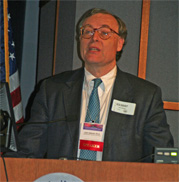 John Gabrieli, Ph.D., is the Grover Hermann Professor of Health Sciences and Technology and Cognitive Neuroscience at the
Massachusetts Institute of Technology (MIT). He has a dual appointment in the Harvard-MIT Division of Health Sciences and
Technology (HST) and in the Department of Brain and Cognitive Sciences. He is Director of the Athinoula A. Martinos Imaging
Center at the McGovern Institute for Brain Research, and Co-Director of the MIT Clinical Research Center. Dr. Gabrieli graduated
from Yale, completed doctoral training in Behavioral Neuroscience at MIT, and was a postdoctoral fellow at Harvard. He has
been on the faculty of Northwestern University and Stanford University. Dr. Gabrieli's area of research is human cognitive
neuroscience in which he studies the brain basis of memory, language, and thought. His research examines normal brain functions
and diseases of those functions that occur in Alzheimer's disease, Parkinson's disease, autism, dyslexia, and attention deficit
disorder. This research involves behavioral experimentation and the use of multiple measures of brain function and structure,
including functional magnetic resonance imaging (fMRI), diffusion tensor imaging (DTI), and voxel-based morphometry (VBM).
He is first or senior author on over 200 papers, including publications in Science and Nature. Dr. Gabrieli serves on the
Board of Scientific Counselors for the National Institute on Mental Health and the Intelligence Science Board.
John Gabrieli, Ph.D., is the Grover Hermann Professor of Health Sciences and Technology and Cognitive Neuroscience at the
Massachusetts Institute of Technology (MIT). He has a dual appointment in the Harvard-MIT Division of Health Sciences and
Technology (HST) and in the Department of Brain and Cognitive Sciences. He is Director of the Athinoula A. Martinos Imaging
Center at the McGovern Institute for Brain Research, and Co-Director of the MIT Clinical Research Center. Dr. Gabrieli graduated
from Yale, completed doctoral training in Behavioral Neuroscience at MIT, and was a postdoctoral fellow at Harvard. He has
been on the faculty of Northwestern University and Stanford University. Dr. Gabrieli's area of research is human cognitive
neuroscience in which he studies the brain basis of memory, language, and thought. His research examines normal brain functions
and diseases of those functions that occur in Alzheimer's disease, Parkinson's disease, autism, dyslexia, and attention deficit
disorder. This research involves behavioral experimentation and the use of multiple measures of brain function and structure,
including functional magnetic resonance imaging (fMRI), diffusion tensor imaging (DTI), and voxel-based morphometry (VBM).
He is first or senior author on over 200 papers, including publications in Science and Nature. Dr. Gabrieli serves on the
Board of Scientific Counselors for the National Institute on Mental Health and the Intelligence Science Board.
Richard A. Gibbs, Ph.D.
Baylor College of Medicine
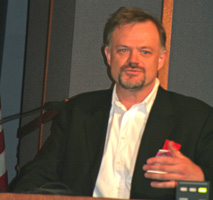 Richard Gibbs is the Founder and Director of the Baylor College of Medicine Human Genome Sequencing Center (BCM-HGSC), in
Houston, Texas. Under his leadership the group was one of five main groups to complete the Human Genome Project, and since
has collaborated to sequence the first fruit fly species, Drosophila melanogaster, the mouse, the slime mold Dictyostelium
discoideum and the rat. The group is also collaborating on the rhesus macaque and soon the wallaby. The BCM-HGSC has sequenced
Drosophila pseudoobscura, the honey bee, sea urchin, the red flour beetle, a number of bacteria that cause serious infections
(Rickettsia typhi, Enterococcus faecium, Mannheimia haemolytica and Fusobacterium nucleatum), and is now completing the cow.
In addition to the genome projects the BCM-HGSC has continually developed new sequencing technologies and innovations. These
have also been applied to both genome projects and to 'mutation discovery', via PCR re-sequencing. As a result the BCM-HGSC
has developed an ongoing capacity to characterize hundreds of individual genes at the level of individual DNA sequence changes.
The mutation discovery pipeline has been used successfully for several projects targeted at elucidation of key mutations in
disease, including bipolar/manic depressive illness and idiopathic epilepsy. Putative functional mutations are under investigation
in each of these disorders. The whole genome sequencing and mutation discovery are bridged by ongoing efforts in large scale
genotyping. The BCM-HGSC has been collaborating with ParAllele who have developed a Molecular Inversion Probe assay. Together
the groups have generated 5% of the raw data for the Human HapMap project, as part of the International HapMap consortium.
This technology is now translated into the further analysis of the Bovine and Honey Bee by a similar process of variation
discovery and genotyping.
Richard Gibbs is the Founder and Director of the Baylor College of Medicine Human Genome Sequencing Center (BCM-HGSC), in
Houston, Texas. Under his leadership the group was one of five main groups to complete the Human Genome Project, and since
has collaborated to sequence the first fruit fly species, Drosophila melanogaster, the mouse, the slime mold Dictyostelium
discoideum and the rat. The group is also collaborating on the rhesus macaque and soon the wallaby. The BCM-HGSC has sequenced
Drosophila pseudoobscura, the honey bee, sea urchin, the red flour beetle, a number of bacteria that cause serious infections
(Rickettsia typhi, Enterococcus faecium, Mannheimia haemolytica and Fusobacterium nucleatum), and is now completing the cow.
In addition to the genome projects the BCM-HGSC has continually developed new sequencing technologies and innovations. These
have also been applied to both genome projects and to 'mutation discovery', via PCR re-sequencing. As a result the BCM-HGSC
has developed an ongoing capacity to characterize hundreds of individual genes at the level of individual DNA sequence changes.
The mutation discovery pipeline has been used successfully for several projects targeted at elucidation of key mutations in
disease, including bipolar/manic depressive illness and idiopathic epilepsy. Putative functional mutations are under investigation
in each of these disorders. The whole genome sequencing and mutation discovery are bridged by ongoing efforts in large scale
genotyping. The BCM-HGSC has been collaborating with ParAllele who have developed a Molecular Inversion Probe assay. Together
the groups have generated 5% of the raw data for the Human HapMap project, as part of the International HapMap consortium.
This technology is now translated into the further analysis of the Bovine and Honey Bee by a similar process of variation
discovery and genotyping.
Kevin Graber, M.D.
Stanford University
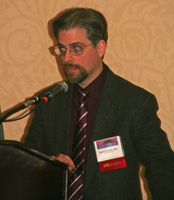 Kevin Graber, M.D. is an Instructor of Neurology and Neurological Sciences at Stanford University and divides his time between
the epilepsy research laboratories and caring for patients with refractory epilepsy at the Stanford Comprehensive Epilepsy
Center. Dr. Graber received his medical degree at Indiana University and completed neurology residency training at Stanford
University School of Medicine. At Stanford he did postdoctoral training with Dr. David Prince with a Dana Foundation fellowship
and completed a clinical epilepsy/EEG fellowship under the mentorship of Dr. Michael Risinger. He returned to the epilepsy
research laboratories with a mentored clinical scientist research career development award from NINDS studying the pathophysiology
of posttraumatic epileptogenesis in the rodent undercut model. A primary interest is developing strategies for prevention
of epilepsy; his work provides the only example of successful reduction of hyperexcitability with a treatment the follows
traumatic injury. His findings can be found in the Annals of Neurology and Epilepsia.
Kevin Graber, M.D. is an Instructor of Neurology and Neurological Sciences at Stanford University and divides his time between
the epilepsy research laboratories and caring for patients with refractory epilepsy at the Stanford Comprehensive Epilepsy
Center. Dr. Graber received his medical degree at Indiana University and completed neurology residency training at Stanford
University School of Medicine. At Stanford he did postdoctoral training with Dr. David Prince with a Dana Foundation fellowship
and completed a clinical epilepsy/EEG fellowship under the mentorship of Dr. Michael Risinger. He returned to the epilepsy
research laboratories with a mentored clinical scientist research career development award from NINDS studying the pathophysiology
of posttraumatic epileptogenesis in the rodent undercut model. A primary interest is developing strategies for prevention
of epilepsy; his work provides the only example of successful reduction of hyperexcitability with a treatment the follows
traumatic injury. His findings can be found in the Annals of Neurology and Epilepsia.
Sherry Healey
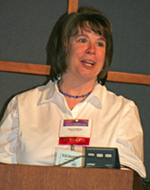 Sherry Healey was eight months pregnant with her second child when her first born, Michael, who was nearly two years old at
the time, started having seizures. Within weeks, and for no apparent reason, the seizures became more frequent until he started
having them every day - all day. Six months after his first seizure, he starting losing skills and was unable to learn new
ones. Now Michael is 12 but his seizures prevent cognitive development beyond that of a two year old. Michael has shown great
resilience in taking a multitude of medications and undergoing therapies in the hope that something will give him steady,
continuous relief. He also underwent surgery to implant a vagus nerve stimulator, a device which is sometimes referred to
as a pacemaker for the brain. While the device moderates the seizures, he continues to experience about three per week. He
is not a candidate for other surgeries but he and his parents continue to look for answers. Meanwhile, Michael goes to a school
for children with disabilities, and Sherry has found support groups that sponsor a variety of events for children with health
needs and raise money for research. Sherry is proud of Michael because despite all that he has been through, he is well behaved
and she says he is the kind of child who people love as soon as they meet. And she is proud of her two younger sons for loving
and caring for their brother despite the demands that he makes on the entire family. While Sherry worries about Michael's
future and what it will mean when he reaches adulthood, she is determined to share her experiences to educate others on the
need for better epilepsy research, better treatments, and for a cure.
Sherry Healey was eight months pregnant with her second child when her first born, Michael, who was nearly two years old at
the time, started having seizures. Within weeks, and for no apparent reason, the seizures became more frequent until he started
having them every day - all day. Six months after his first seizure, he starting losing skills and was unable to learn new
ones. Now Michael is 12 but his seizures prevent cognitive development beyond that of a two year old. Michael has shown great
resilience in taking a multitude of medications and undergoing therapies in the hope that something will give him steady,
continuous relief. He also underwent surgery to implant a vagus nerve stimulator, a device which is sometimes referred to
as a pacemaker for the brain. While the device moderates the seizures, he continues to experience about three per week. He
is not a candidate for other surgeries but he and his parents continue to look for answers. Meanwhile, Michael goes to a school
for children with disabilities, and Sherry has found support groups that sponsor a variety of events for children with health
needs and raise money for research. Sherry is proud of Michael because despite all that he has been through, he is well behaved
and she says he is the kind of child who people love as soon as they meet. And she is proud of her two younger sons for loving
and caring for their brother despite the demands that he makes on the entire family. While Sherry worries about Michael's
future and what it will mean when he reaches adulthood, she is determined to share her experiences to educate others on the
need for better epilepsy research, better treatments, and for a cure.
Susan T. Herman, M.D.
University of Pennsylvania
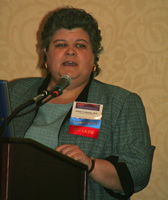 Dr. Susan Herman is Assistant Professor of Neurology at the University of Pennsylvania and the Director of the Epilepsy Monitoring
Unit and EEG Laboratory at the Hospital of the University of Pennsylvania. Dr. Herman graduated from Johns Hopkins University,
received her medical degree from Columbia University College of Physicians and Surgeons, and completed her neurology residency
and fellowship training in epilepsy and electroencephalography at Columbia-Presbyterian Medical Center and the Neurological
Institute of New York. She joined the faculty at Penn in 2002, and is the Associate Director of the Penn Neurology Residency
Program. Dr. Herman's clinical research focuses on development of epilepsy and neurological outcome after brain injuries such
as stroke and traumatic brain injury. She developed a clinical program of EEG monitoring in the intensive care unit. Her research
has led to new bedside EEG tools for detection of secondary insults such as subclinical seizures, status epilepticus, and
ischemia. In addition, she is co-investigator in a pilot clinical trial to prevent epilepsy following traumatic brain injury.
One of the major aims of this trial is to discover and validate electrophysiologic biomarkers of epileptogenesis. Dr. Herman
is board certified in Neurology and Clinical Neurophysiology. She is a member of the American Epilepsy Society and the American
Academy of Neurology, and serves on the boards of the American Clinical Neurophysiology Society and American Board of Clinical
Neurophysiology, as well as the Professional Advisory Board of the Epilepsy Foundation of Eastern Pennsylvania. She has published
extensively on clinical aspects of epilepsy care as well as clinical trials for epileptogenesis.
Dr. Susan Herman is Assistant Professor of Neurology at the University of Pennsylvania and the Director of the Epilepsy Monitoring
Unit and EEG Laboratory at the Hospital of the University of Pennsylvania. Dr. Herman graduated from Johns Hopkins University,
received her medical degree from Columbia University College of Physicians and Surgeons, and completed her neurology residency
and fellowship training in epilepsy and electroencephalography at Columbia-Presbyterian Medical Center and the Neurological
Institute of New York. She joined the faculty at Penn in 2002, and is the Associate Director of the Penn Neurology Residency
Program. Dr. Herman's clinical research focuses on development of epilepsy and neurological outcome after brain injuries such
as stroke and traumatic brain injury. She developed a clinical program of EEG monitoring in the intensive care unit. Her research
has led to new bedside EEG tools for detection of secondary insults such as subclinical seizures, status epilepticus, and
ischemia. In addition, she is co-investigator in a pilot clinical trial to prevent epilepsy following traumatic brain injury.
One of the major aims of this trial is to discover and validate electrophysiologic biomarkers of epileptogenesis. Dr. Herman
is board certified in Neurology and Clinical Neurophysiology. She is a member of the American Epilepsy Society and the American
Academy of Neurology, and serves on the boards of the American Clinical Neurophysiology Society and American Board of Clinical
Neurophysiology, as well as the Professional Advisory Board of the Epilepsy Foundation of Eastern Pennsylvania. She has published
extensively on clinical aspects of epilepsy care as well as clinical trials for epileptogenesis.
Bruce P. Hermann, PhD
University of Wisconsin School of Medicine and Public Health
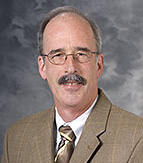 Bruce Hermann, PhD is Professor in the Department of Neurology and Director of the Matthews Neuropsychology Lab.Dr. Hermann's
primary clinical and research interests include the cognitive and behavioral co-morbidities of the epilepsies, the neurobehavioral
outcomes of epilepsy surgery, and the course and impact of chronic epilepsy on cognition, brain structure and psychiatric
comorbidity. Dr. Hermann has served on the Board of Directors of the Epilepsy Foundation and the American Epilepsy Society,
is currently the Chair of the Professional Advisory Board of the Epilepsy Foundation, and he serves on the editorial boards
of Epilepsy and Behavior and Epilepsy Research and is an Associate Editor of Epilepsia.
Bruce Hermann, PhD is Professor in the Department of Neurology and Director of the Matthews Neuropsychology Lab.Dr. Hermann's
primary clinical and research interests include the cognitive and behavioral co-morbidities of the epilepsies, the neurobehavioral
outcomes of epilepsy surgery, and the course and impact of chronic epilepsy on cognition, brain structure and psychiatric
comorbidity. Dr. Hermann has served on the Board of Directors of the Epilepsy Foundation and the American Epilepsy Society,
is currently the Chair of the Professional Advisory Board of the Epilepsy Foundation, and he serves on the editorial boards
of Epilepsy and Behavior and Epilepsy Research and is an Associate Editor of Epilepsia.
Gregory L. Holmes, M.D.
Dartmouth Medical School
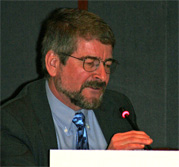 Dr. Holmes is currently chief of neurology and professor of medicine (neurology) and pediatrics at Dartmouth Medical School.
Dr. Holmes went to medical school at the University of Virginia and did his pediatric training at Yale-New Haven Hospital.
He then returned to the University of Virginia to do his neurology training. Dr. Holmes obtained training in basic research
with Soloman Moshé at Albert Einstein College of Medicine and Yezekiel Ben-Ari at INSERM in Paris. Dr. Holmes has focused
his basic science research on the short- and long-term effect of seizures on the developing brain. He has had funding from
NIH for over 2 decades and has published articles in journals such as Annals of Neurology, Journal of Neuroscience, Neuroscience,
Epilepsia, Journal of Comparative Neurology, Nature Neuroscience, and Nature. His clinical interests are in the treatment
of pharmacoresistant epilepsy in children. He has published over 400 papers and book chapters. Dr. Holmes has received a number
of awards for his research, including the Michael Prize awarded by Stiftung Michael for outstanding work in the field of epilepsy
research in 1989, the Milken Family Medical Foundation-American Epilepsy Society Research Award in basic neuroscience in 1989,
the Pierre Gloor Award for outstanding achievements in research by the American Clinical Neurophysiology Society in 2000,
and the Western Massachusetts Epilepsy Awareness Committee Inspiration for a Cure Award in 2002. Dr. Holmes has served on
the executive boards of the American Epilepsy Society, American Clinical Neurophysiology Society, and Child Neurology Society.
He was president of the Eastern Association of Electroencephalographers and American Epilepsy Society. Dr. Holmes has been
on the editorial boards of the Annals of Neurology, Epilepsy & Behavior, Brain & Development, Clinical Neurophysiology, Journal
of Child Neurology, Pediatric Neurology, and Epilepsy Research.
Dr. Holmes is currently chief of neurology and professor of medicine (neurology) and pediatrics at Dartmouth Medical School.
Dr. Holmes went to medical school at the University of Virginia and did his pediatric training at Yale-New Haven Hospital.
He then returned to the University of Virginia to do his neurology training. Dr. Holmes obtained training in basic research
with Soloman Moshé at Albert Einstein College of Medicine and Yezekiel Ben-Ari at INSERM in Paris. Dr. Holmes has focused
his basic science research on the short- and long-term effect of seizures on the developing brain. He has had funding from
NIH for over 2 decades and has published articles in journals such as Annals of Neurology, Journal of Neuroscience, Neuroscience,
Epilepsia, Journal of Comparative Neurology, Nature Neuroscience, and Nature. His clinical interests are in the treatment
of pharmacoresistant epilepsy in children. He has published over 400 papers and book chapters. Dr. Holmes has received a number
of awards for his research, including the Michael Prize awarded by Stiftung Michael for outstanding work in the field of epilepsy
research in 1989, the Milken Family Medical Foundation-American Epilepsy Society Research Award in basic neuroscience in 1989,
the Pierre Gloor Award for outstanding achievements in research by the American Clinical Neurophysiology Society in 2000,
and the Western Massachusetts Epilepsy Awareness Committee Inspiration for a Cure Award in 2002. Dr. Holmes has served on
the executive boards of the American Epilepsy Society, American Clinical Neurophysiology Society, and Child Neurology Society.
He was president of the Eastern Association of Electroencephalographers and American Epilepsy Society. Dr. Holmes has been
on the editorial boards of the Annals of Neurology, Epilepsy & Behavior, Brain & Development, Clinical Neurophysiology, Journal
of Child Neurology, Pediatric Neurology, and Epilepsy Research.
Richard L. Huganir, Ph.D.
Solomon H. Snyder Department of Neuroscience
Howard Hughes Medical Institute
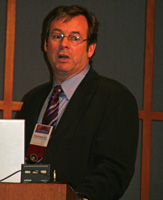 Dr. Richard Huganir is a Professor and Director of the Solomon H. Snyder Department of Neuroscience, as well as an Investigator
with Howard Hughes Medical Institute. He has joint appointments in the Department Biological Chemistry and the Department
of Pharmacology. Dr. Huganir completed his undergraduate work in biochemistry at Vassar College in 1975. He received his Ph.D.
degree in Biochemistry, Molecular and Cell Biology from Cornell University in 1982 where he performed his thesis research
in the laboratory of Dr. Efraim Racker. He was a postdoctoral fellow with the Nobel Laureate, Dr. Paul Greengard, at Yale
University School of Medicine from 1982-1984. Dr. Huganir then moved to the Rockefeller University where he was an Assistant
Professor of Molecular and Cellular Neurobiology from 1984-1988. Dr. Huganir came to the Johns Hopkins University School of
Medicine in 1988 as an Associate Investigator in the Howard Hughes Medical Institute and an Associate Professor in the Department
of Neuroscience. He was promoted to Professor in the Department of Neuroscience and Investigator in the Howard Hughes Medical
Institute in 1993. Dr. Huganir became the Director or the Solomon H. Snyder Department of Neuroscience in 2006. Dr. Huganir
has served as Treasurer of the Society for Neuroscience. Dr. Huganir has received the Young Investigator Award from the Society
for Neuroscience, the Santiago Grisolia Award and is a member of the American Academy of Arts and Sciences and the National
Academy of Sciences, and a fellow of the American Association for the Advancement of Science. Dr. Huganir has published over
190 papers in peer-reviewed journals. Dr. Huganir's career has focused on synapses, the connections between nerve cells, in
the brain. The function of the brain, our emotions, our intelligence, and our ability to learn and remember, all depend on
the complexity of these connections between neurons. These intricate connections form neuronal circuits that are constantly
modified during life by experience. Dr. Huganir has been interested in the cellular and molecular mechanisms that regulate
the transmission of signals at synapses. Dr. Huganir's general approach has been to study molecular and cellular mechanisms
that regulate neurotransmitter receptors. These receptors mediate the response of neurons to neurotransmitters released at
synapses and are a central convergence point for transmission of signals between neurons. Modulation of the function of these
receptors is a powerful and efficient way to modulate the strength of connections between neurons. Dr. Huganir's studies have
shown that the regulation of receptor function is a major mechanism for the regulation of neuronal excitability and connectivity
in the brain and is critical for many higher brain processes including learning and memory and the proper development of the
brain. Moreover, recent evidence has indicated that disruption of these forms of receptor regulation plays an important role
in several neurological and psychiatric disorders of the brain.
Dr. Richard Huganir is a Professor and Director of the Solomon H. Snyder Department of Neuroscience, as well as an Investigator
with Howard Hughes Medical Institute. He has joint appointments in the Department Biological Chemistry and the Department
of Pharmacology. Dr. Huganir completed his undergraduate work in biochemistry at Vassar College in 1975. He received his Ph.D.
degree in Biochemistry, Molecular and Cell Biology from Cornell University in 1982 where he performed his thesis research
in the laboratory of Dr. Efraim Racker. He was a postdoctoral fellow with the Nobel Laureate, Dr. Paul Greengard, at Yale
University School of Medicine from 1982-1984. Dr. Huganir then moved to the Rockefeller University where he was an Assistant
Professor of Molecular and Cellular Neurobiology from 1984-1988. Dr. Huganir came to the Johns Hopkins University School of
Medicine in 1988 as an Associate Investigator in the Howard Hughes Medical Institute and an Associate Professor in the Department
of Neuroscience. He was promoted to Professor in the Department of Neuroscience and Investigator in the Howard Hughes Medical
Institute in 1993. Dr. Huganir became the Director or the Solomon H. Snyder Department of Neuroscience in 2006. Dr. Huganir
has served as Treasurer of the Society for Neuroscience. Dr. Huganir has received the Young Investigator Award from the Society
for Neuroscience, the Santiago Grisolia Award and is a member of the American Academy of Arts and Sciences and the National
Academy of Sciences, and a fellow of the American Association for the Advancement of Science. Dr. Huganir has published over
190 papers in peer-reviewed journals. Dr. Huganir's career has focused on synapses, the connections between nerve cells, in
the brain. The function of the brain, our emotions, our intelligence, and our ability to learn and remember, all depend on
the complexity of these connections between neurons. These intricate connections form neuronal circuits that are constantly
modified during life by experience. Dr. Huganir has been interested in the cellular and molecular mechanisms that regulate
the transmission of signals at synapses. Dr. Huganir's general approach has been to study molecular and cellular mechanisms
that regulate neurotransmitter receptors. These receptors mediate the response of neurons to neurotransmitters released at
synapses and are a central convergence point for transmission of signals between neurons. Modulation of the function of these
receptors is a powerful and efficient way to modulate the strength of connections between neurons. Dr. Huganir's studies have
shown that the regulation of receptor function is a major mechanism for the regulation of neuronal excitability and connectivity
in the brain and is critical for many higher brain processes including learning and memory and the proper development of the
brain. Moreover, recent evidence has indicated that disruption of these forms of receptor regulation plays an important role
in several neurological and psychiatric disorders of the brain.
Frances E. Jensen, M.D.
Children's Hospital Boston
Harvard Medical School
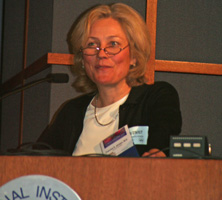 Frances E. Jensen, M.D. is Associate Professor of Neurology at Harvard Medical School, Boston, and Director of Epilepsy Research
at Children's Hospital Boston. Dr. Jensen obtained her BS from Smith College, and then completed her medical degree at Cornell
University Medical College. Dr. Jensen did her internship in internal medicine at the Brigham and Women's Hospital Boston,
and then completed her neurology residency in the Harvard Longwood Neurology Residency Program, Boston MA. Following residensy,
she completed postdoctoral fellowship in study in neurology and neuroscience at Children's Hospital Boston and Harvard Medical
School. As Chair of the Council of Medical Education of the American Epilepsy Society (2003-2006), Dr. Jensen has made important
contributions as a physician-scientist to professional training. She serves on many advisory boards for private and public
research foundations, and is the 2007-2008 Chair of the Program Committee for the Society of Neuroscience. Among other honors,
she has received the First Award from the National Institutes of Health and was the 2003 Lennox Lecturer at the American Epilepsy
Society Meeting. Dr. Jensen has published numerous original research publications and reviews concerning the interaction between
brain development and mechanism of disease, specifically epilepsy and perinatal brain injury.
Frances E. Jensen, M.D. is Associate Professor of Neurology at Harvard Medical School, Boston, and Director of Epilepsy Research
at Children's Hospital Boston. Dr. Jensen obtained her BS from Smith College, and then completed her medical degree at Cornell
University Medical College. Dr. Jensen did her internship in internal medicine at the Brigham and Women's Hospital Boston,
and then completed her neurology residency in the Harvard Longwood Neurology Residency Program, Boston MA. Following residensy,
she completed postdoctoral fellowship in study in neurology and neuroscience at Children's Hospital Boston and Harvard Medical
School. As Chair of the Council of Medical Education of the American Epilepsy Society (2003-2006), Dr. Jensen has made important
contributions as a physician-scientist to professional training. She serves on many advisory boards for private and public
research foundations, and is the 2007-2008 Chair of the Program Committee for the Society of Neuroscience. Among other honors,
she has received the First Award from the National Institutes of Health and was the 2003 Lennox Lecturer at the American Epilepsy
Society Meeting. Dr. Jensen has published numerous original research publications and reviews concerning the interaction between
brain development and mechanism of disease, specifically epilepsy and perinatal brain injury.
Walter Koroshetz, M.D.
Deputy Director, National Institute of Neurological Disorders and Stroke
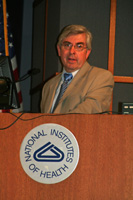 Walter J. Koroshetz, M.D., is the deputy director of the National Institute of Neurological Disorders and Stroke (NINDS).
Dr. Koroshetz graduated magna cum laude from Georgetown University and attended the University of Chicago Pritzker School
of Medicine where he obtained his M.D. and completed 2 years of medical residency. In 1981, Dr. Koroshetz moved to the Massachusetts
General Hospital (MGH), where he finished his residency in internal medicine and then began neurology residency, finishing
as chief resident. After residency, he entered the laboratory of Dr. David Corey to train in cellular neurophysiology and
neurobiology and joined the Huntington's Disease Center Without Walls. His laboratory work focused on excitotoxicity, a cause
of neuronal cell death in various disease states and a consequence of in vitro epileptiform activity. He was a project PI
in the MGH program projects in both stroke and Alzheimer's disease research. Together with Bruce Jenkins of the Martinos MRI
center, he discovered, using MR spectroscopy, that patients with Huntington's disease had elevated brain lactic acid levels
that could be partially normalized by treatment with coenzyme Q10. CoQ10 is currently being studied in large clinical trials
in both Huntington's and Parkinson's disease. In 1990, Dr. Koroshetz became director of the neurology residency program and
became very involved in stroke research and acute stroke care. In 1994, he became director of the neurointensive care service
and the acute stroke service. Both programs grew to provide 24/7 coverage, a well-respected fellowship program, and scientific
advances. The acute stroke service also collaborated with the interventional neuroradiology division to provide intra-arterial
reperfusion therapy for acute stroke patients. Together with Dr. A. Gregory Sorensen and the clinical neuroradiology division
under Dr. R. Gilberto Gonzalez, the team pioneered the use of diffusion- and perfusion-weighted MRI imaging in acute stroke.
During his 25 years at the MGH, Dr. Koroshetz cared for patients with a variety of neurologic and medical problems including
epilepsy, and especially status epilepticus. Prior to assuming his post at NIH, Dr. Koroshetz was the vice-chair of neurology
at the MGH, chair of the Partners Neurology residency committee, director of the Partners Stroke Program, director of the
MGH Stroke Service, and professor at Harvard Medical School.
Walter J. Koroshetz, M.D., is the deputy director of the National Institute of Neurological Disorders and Stroke (NINDS).
Dr. Koroshetz graduated magna cum laude from Georgetown University and attended the University of Chicago Pritzker School
of Medicine where he obtained his M.D. and completed 2 years of medical residency. In 1981, Dr. Koroshetz moved to the Massachusetts
General Hospital (MGH), where he finished his residency in internal medicine and then began neurology residency, finishing
as chief resident. After residency, he entered the laboratory of Dr. David Corey to train in cellular neurophysiology and
neurobiology and joined the Huntington's Disease Center Without Walls. His laboratory work focused on excitotoxicity, a cause
of neuronal cell death in various disease states and a consequence of in vitro epileptiform activity. He was a project PI
in the MGH program projects in both stroke and Alzheimer's disease research. Together with Bruce Jenkins of the Martinos MRI
center, he discovered, using MR spectroscopy, that patients with Huntington's disease had elevated brain lactic acid levels
that could be partially normalized by treatment with coenzyme Q10. CoQ10 is currently being studied in large clinical trials
in both Huntington's and Parkinson's disease. In 1990, Dr. Koroshetz became director of the neurology residency program and
became very involved in stroke research and acute stroke care. In 1994, he became director of the neurointensive care service
and the acute stroke service. Both programs grew to provide 24/7 coverage, a well-respected fellowship program, and scientific
advances. The acute stroke service also collaborated with the interventional neuroradiology division to provide intra-arterial
reperfusion therapy for acute stroke patients. Together with Dr. A. Gregory Sorensen and the clinical neuroradiology division
under Dr. R. Gilberto Gonzalez, the team pioneered the use of diffusion- and perfusion-weighted MRI imaging in acute stroke.
During his 25 years at the MGH, Dr. Koroshetz cared for patients with a variety of neurologic and medical problems including
epilepsy, and especially status epilepticus. Prior to assuming his post at NIH, Dr. Koroshetz was the vice-chair of neurology
at the MGH, chair of the Partners Neurology residency committee, director of the Partners Stroke Program, director of the
MGH Stroke Service, and professor at Harvard Medical School.
Arnold R. Kriegstein, M.D., Ph.D.
University of California, San Francisco
 Born in Germany, Kriegstein received his undergraduate degree from Yale University and his MD and PhD degrees from New York
University in 1977 where his thesis advisor was Dr. Eric Kandel. He subsequently completed Residency training in Neurology
at the Brigham and Women's Hospital, Children's Hospital, and Beth Israel Hospital in Boston. He has held academic appointments
at New York University, Harvard University, Stanford University, Yale University, and Columbia University. In 2001 he was
named the John and Elizabeth Harris Professor of Neurology and became the founding Director of the Neural Stem Cell Program
at Columbia. In 2004 he became the first Director of the Program in Developmental and Stem Cell Biology at UCSF. He is currently
the John Bowes Distinguished Professor in Stem Cell and Tissue Biology and Founding Director of the UCSF Institute for Regeneration
Medicine. As director of the Institute, Dr. Kriegstein oversees one of the largest and most comprehensive stem cell programs
in the United States. The Institute encompasses some 120 laboratories carrying out studies aimed at gaining fundamental information
about human development, with an eye toward illuminating and treating a broad range of diseases and disorders, from heart
disease and diabetes to birth defects, neurological disorders including epilepsy, osteoporosis, and cancer. Studies are conducted
in adult and embryonic stem cells, and related cells, of humans, mice, zebra fish and worms. Dr. Kriegstein's research focuses
on the way in which neural stem and progenitor cells in the embryonic brain produce neurons, and ways in which this information
can be used for cell based therapies to treat diseases of the nervous system. The process by which neurons are born and migrate
to the cortex is of fundamental importance to a wide range of neurodevelopmental disorders many of them associated with epilepsy.
Findings from Dr. Kriegstein's laboratory reveal that embryonic neuronal stem cells appear to be highly interactive, communicating
with each other directly through gap junction channels and responding to their local environment through specific neurotransmitter
receptors. In addition, he has found that radial glial cells, present only in the embryonic and fetal developing brain and
long thought to simply guide embryonic nerve cells during migration, are neuronal stem cells in the developing brain. Radial
glial cells divide to produce nerve cells that often climb along their parent radial glial cells to reach the developing cerebral
cortex. This finding suggests that a radial glial 'mother' cell generates and guides daughter neurons. More recently, he has
found a second nerve cell precursor in the embryonic brain that undergoes a different mode of cell division in a distinct
proliferative zone. This suggests new mechanisms for the generation of cell diversity in the developing cortex. The identification
of the radial glial cell as a key neuronal stem cell in the developing brain has helped shift attention to the role of glial
cells as neuronal stem cells in the adult brain, and has the potential to lead to innovative therapies aimed treating diseases
of brain development and injury associated with epilepsy.
Born in Germany, Kriegstein received his undergraduate degree from Yale University and his MD and PhD degrees from New York
University in 1977 where his thesis advisor was Dr. Eric Kandel. He subsequently completed Residency training in Neurology
at the Brigham and Women's Hospital, Children's Hospital, and Beth Israel Hospital in Boston. He has held academic appointments
at New York University, Harvard University, Stanford University, Yale University, and Columbia University. In 2001 he was
named the John and Elizabeth Harris Professor of Neurology and became the founding Director of the Neural Stem Cell Program
at Columbia. In 2004 he became the first Director of the Program in Developmental and Stem Cell Biology at UCSF. He is currently
the John Bowes Distinguished Professor in Stem Cell and Tissue Biology and Founding Director of the UCSF Institute for Regeneration
Medicine. As director of the Institute, Dr. Kriegstein oversees one of the largest and most comprehensive stem cell programs
in the United States. The Institute encompasses some 120 laboratories carrying out studies aimed at gaining fundamental information
about human development, with an eye toward illuminating and treating a broad range of diseases and disorders, from heart
disease and diabetes to birth defects, neurological disorders including epilepsy, osteoporosis, and cancer. Studies are conducted
in adult and embryonic stem cells, and related cells, of humans, mice, zebra fish and worms. Dr. Kriegstein's research focuses
on the way in which neural stem and progenitor cells in the embryonic brain produce neurons, and ways in which this information
can be used for cell based therapies to treat diseases of the nervous system. The process by which neurons are born and migrate
to the cortex is of fundamental importance to a wide range of neurodevelopmental disorders many of them associated with epilepsy.
Findings from Dr. Kriegstein's laboratory reveal that embryonic neuronal stem cells appear to be highly interactive, communicating
with each other directly through gap junction channels and responding to their local environment through specific neurotransmitter
receptors. In addition, he has found that radial glial cells, present only in the embryonic and fetal developing brain and
long thought to simply guide embryonic nerve cells during migration, are neuronal stem cells in the developing brain. Radial
glial cells divide to produce nerve cells that often climb along their parent radial glial cells to reach the developing cerebral
cortex. This finding suggests that a radial glial 'mother' cell generates and guides daughter neurons. More recently, he has
found a second nerve cell precursor in the embryonic brain that undergoes a different mode of cell division in a distinct
proliferative zone. This suggests new mechanisms for the generation of cell diversity in the developing cortex. The identification
of the radial glial cell as a key neuronal stem cell in the developing brain has helped shift attention to the role of glial
cells as neuronal stem cells in the adult brain, and has the potential to lead to innovative therapies aimed treating diseases
of brain development and injury associated with epilepsy.
W. Curt LaFrance, Jr., M.D.
Rhode Island Hospital
Brown Medical School
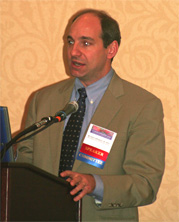 W. Curt LaFrance, Jr., MD, is the Director of Neuropsychiatry at Rhode Island Hospital (RIH) and Assistant Professor of Psychiatry
and Neurology (Research) in the Departments of Psychiatry and Human Behavior and of Clinical Neurosciences at Brown Medical
School. He is the neuropsychiatrist for the RIH Comprehensive Epilepsy Program, and a faculty member of the Brown University
Brain Science Program. Dr. LaFrance received a bachelor of arts degree in psychology from Wake Forest University and his medical
degree from the Medical College of Georgia. He completed the combined residency in neurology and psychiatry at Brown Medical
School, and he is boarded in both neurology and in psychiatry by the American Board of Psychiatry and Neurology. After residency,
he completed a Clinical Research Fellowship in Combined Treatments at Brown University with an institutional NIH T-32 national
research service award. Dr. LaFrance received a 5 year K23 award from the National Institute of Neurological Disorders and
Stroke (NINDS) to conduct clinical trials for patients with psychological nonepileptic seizures (NES). In 2003, he was awarded
the Career Development Award by the American Neuropsychiatric Association (ANPA). His biography has been included in Marquis
Who's Who of Emerging Leaders and Who's Who in the World. His academic society memberships include American Academy of Neurology,
American Neuropsychiatric Association, American Psychiatric Association, American Epilepsy Society, and Christian Medical
and Dental Associations. Dr. LaFrance serves on the Committee on Research for the ANPA, the Editorial Board for Epilepsy &
Behavior, and he is an ad hoc reviewer for Neurology, Epilepsia and the Journal of Neurology, Neurosurgery & Psychiatry. He chaired the NINDS/NIMH/AES NES treatment workshop, which took place in May 2005. This international workshop brought
neurologists, psychiatrists, psychologists and allied health members together to set the direction for future NES research.
He served on the Neuroethics interdisciplinary panel for the Center for Bioethics and Human Dignity and as a reviewer on The
Wellcome Trust's Neuroscience and Mental Health Funding Committee. His research interests include neuropsychiatric aspects
of epilepsy. He has given invited lectures regionally, nationally and internationally on topics in neuropsychiatry, integrative
medicine, and on NES. He has published in Neurology, Journal of Neuropsychiatry and Clinical Neurosciences, Epilepsia, International Journal of Psychiatry, Current Psychiatry and Epilepsy & Behavior.
W. Curt LaFrance, Jr., MD, is the Director of Neuropsychiatry at Rhode Island Hospital (RIH) and Assistant Professor of Psychiatry
and Neurology (Research) in the Departments of Psychiatry and Human Behavior and of Clinical Neurosciences at Brown Medical
School. He is the neuropsychiatrist for the RIH Comprehensive Epilepsy Program, and a faculty member of the Brown University
Brain Science Program. Dr. LaFrance received a bachelor of arts degree in psychology from Wake Forest University and his medical
degree from the Medical College of Georgia. He completed the combined residency in neurology and psychiatry at Brown Medical
School, and he is boarded in both neurology and in psychiatry by the American Board of Psychiatry and Neurology. After residency,
he completed a Clinical Research Fellowship in Combined Treatments at Brown University with an institutional NIH T-32 national
research service award. Dr. LaFrance received a 5 year K23 award from the National Institute of Neurological Disorders and
Stroke (NINDS) to conduct clinical trials for patients with psychological nonepileptic seizures (NES). In 2003, he was awarded
the Career Development Award by the American Neuropsychiatric Association (ANPA). His biography has been included in Marquis
Who's Who of Emerging Leaders and Who's Who in the World. His academic society memberships include American Academy of Neurology,
American Neuropsychiatric Association, American Psychiatric Association, American Epilepsy Society, and Christian Medical
and Dental Associations. Dr. LaFrance serves on the Committee on Research for the ANPA, the Editorial Board for Epilepsy &
Behavior, and he is an ad hoc reviewer for Neurology, Epilepsia and the Journal of Neurology, Neurosurgery & Psychiatry. He chaired the NINDS/NIMH/AES NES treatment workshop, which took place in May 2005. This international workshop brought
neurologists, psychiatrists, psychologists and allied health members together to set the direction for future NES research.
He served on the Neuroethics interdisciplinary panel for the Center for Bioethics and Human Dignity and as a reviewer on The
Wellcome Trust's Neuroscience and Mental Health Funding Committee. His research interests include neuropsychiatric aspects
of epilepsy. He has given invited lectures regionally, nationally and internationally on topics in neuropsychiatry, integrative
medicine, and on NES. He has published in Neurology, Journal of Neuropsychiatry and Clinical Neurosciences, Epilepsia, International Journal of Psychiatry, Current Psychiatry and Epilepsy & Behavior.
Story C. Landis, Ph.D.
Director, National Institute of Neurological Disorders and Stroke
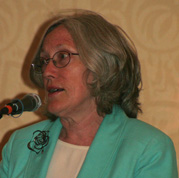 Dr. Landis has been Director of the NINDS since September 1, 2003. As the Director of the NINDS, Dr. Landis oversees an annual
budget of $1.5 billion and a staff of more than 900 scientists, physician-scientists, and administrators. The Institute supports
research by investigators in public and private institutions across the country, as well as by scientists working in its intramural
laboratories and branches in Bethesda, Maryland. Since 1950, the Institute has been at the forefront of U.S. efforts in brain
research, with studies in areas ranging from the structure and function of single brain cells to research on the causes, prevention,
diagnosis and treatment of neurological disorders and, most recently, the translational research that is helping to bridge
the gap. The Institute's mission is to reduce the burden of neurological disease - a burden borne by every age group, by every
segment of society, by people all over the world. Dr. Landis joined the NINDS in 1995 as Scientific Director and worked with
then-Institute Director Zach W. Hall, Ph.D., to coordinate and re-engineer the Institute's intramural research programs. Between
1999 and 2000, under the leadership of NINDS Director Gerald D. Fischbach, M.D., she led the movement, together with NIMH
Scientific Director Robert Desimone, Ph.D., to bring some sense of unity and common purpose to 200 laboratories from eleven
different NIH Institutes, all of which conduct leading edge clinical and basic neuroscience research. A native of New England,
Dr. Landis received her undergraduate degree in biology from Wellesley College in 1967 and her master's degree (1970) and
her Ph.D. (1973) from Harvard University where she conducted research on cerebellar development in mice. After postdoctoral
work at Harvard University studying transmitter plasticity in sympathetic neurons, she served on the faculty of the Harvard
Medical School Department of Neurobiology. In 1985 she joined the faculty of Case Western Reserve University School of Medicine
in Cleveland, Ohio, where she held many academic positions including Associate Professor of Pharmacology, Professor and Director
of the Center on Neurosciences, and Chairman of the Department of Neurosciences, a department she was instrumental in establishing.
Under her leadership, Case Western's neuroscience department achieved worldwide acclaim and a reputation for excellence. Throughout
her research career, Dr. Landis has made many fundamental contributions to the understanding of developmental interactions
required for synapse formation. She has garnered many honors and awards and is an elected fellow of the Academy of Arts and
Sciences, the American Association for the Advancement of Science, and the American Neurological Association. In 2002, she
was named the President-Elect of the Society for Neuroscience.
Dr. Landis has been Director of the NINDS since September 1, 2003. As the Director of the NINDS, Dr. Landis oversees an annual
budget of $1.5 billion and a staff of more than 900 scientists, physician-scientists, and administrators. The Institute supports
research by investigators in public and private institutions across the country, as well as by scientists working in its intramural
laboratories and branches in Bethesda, Maryland. Since 1950, the Institute has been at the forefront of U.S. efforts in brain
research, with studies in areas ranging from the structure and function of single brain cells to research on the causes, prevention,
diagnosis and treatment of neurological disorders and, most recently, the translational research that is helping to bridge
the gap. The Institute's mission is to reduce the burden of neurological disease - a burden borne by every age group, by every
segment of society, by people all over the world. Dr. Landis joined the NINDS in 1995 as Scientific Director and worked with
then-Institute Director Zach W. Hall, Ph.D., to coordinate and re-engineer the Institute's intramural research programs. Between
1999 and 2000, under the leadership of NINDS Director Gerald D. Fischbach, M.D., she led the movement, together with NIMH
Scientific Director Robert Desimone, Ph.D., to bring some sense of unity and common purpose to 200 laboratories from eleven
different NIH Institutes, all of which conduct leading edge clinical and basic neuroscience research. A native of New England,
Dr. Landis received her undergraduate degree in biology from Wellesley College in 1967 and her master's degree (1970) and
her Ph.D. (1973) from Harvard University where she conducted research on cerebellar development in mice. After postdoctoral
work at Harvard University studying transmitter plasticity in sympathetic neurons, she served on the faculty of the Harvard
Medical School Department of Neurobiology. In 1985 she joined the faculty of Case Western Reserve University School of Medicine
in Cleveland, Ohio, where she held many academic positions including Associate Professor of Pharmacology, Professor and Director
of the Center on Neurosciences, and Chairman of the Department of Neurosciences, a department she was instrumental in establishing.
Under her leadership, Case Western's neuroscience department achieved worldwide acclaim and a reputation for excellence. Throughout
her research career, Dr. Landis has made many fundamental contributions to the understanding of developmental interactions
required for synapse formation. She has garnered many honors and awards and is an elected fellow of the Academy of Arts and
Sciences, the American Association for the Advancement of Science, and the American Neurological Association. In 2002, she
was named the President-Elect of the Society for Neuroscience.
Bruce Lanning, Ph.D
ITN Energy Systems
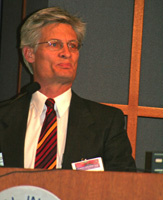 Bruce Lanning, Ph.D, is Director of Thin Film Technologies at ITN Energy Systems, a small research and product development
business in the areas of Aerospace, Energy, Biomedical and Environmental related technologies. Dr. Lanning graduated from
Colorado School of Mines in Metallurgical Engineering, BS, MS, and PhD, and has conducted research and development in materials
science at the basic and applied levels in a variety of organizations, from industry (International Paper Company and Lockheed
Martin) to non-profits (Southwest Research Institute) and universities (Colorado School of Mines and University of Utah).
Dr. Lanning has over twenty five years of professional experience in materials research with particular emphasis in the area
of phase transformation/thermodynamics of thin-film surface and interfacial sciences. His particular area of expertise is
in the atomic level engineering of solid surface/interfacial properties and fabrication of flexible, thin film (sub micron)
device structures for applications such as semiconductor/opto-electronics, wireless sensors, energy storage/harvesting, catalysis,
and corrosion with a number of publications and patents related to this area. Dr. Lanning is currently developing an implantable
device to remotely monitor and stimulate brain electro-physiology and has filed provisional patents for a non-invasive, non-contact
EEG measurement system using surface plasmon-enhanced electro-optic thin film materials. Dr. Lanning is responsible for developments
in solid state lithium batteries/electrochromics, wireless sensors/actuators for biomedical and military applications, and
inorganic membranes and catalysts for gas separation and activation respectively. Dr. Lanning has developed a number of semiconductor
devices, including an antenna-coupled tunneling diode for energy harvesting/uncooled IR detection, a thin-film rechargeable
lithium battery, and a wireless, thin-film magnetostrictive sensor system for detection and monitoring of fatigue damage in
high-value military assets, such as turbine engines. In the area of clean energy, he developed an un-supported, thin-film
palladium alloy membrane for the production of hydrogen with demonstrated output flux that met 2010 DOE (Department of Energy)
goals and has been actively involved in the development, at both the process and device levels, of thin-film polycrystalline
materials (i.e., CIS and CdTe) for flexible solar cell applications.
Bruce Lanning, Ph.D, is Director of Thin Film Technologies at ITN Energy Systems, a small research and product development
business in the areas of Aerospace, Energy, Biomedical and Environmental related technologies. Dr. Lanning graduated from
Colorado School of Mines in Metallurgical Engineering, BS, MS, and PhD, and has conducted research and development in materials
science at the basic and applied levels in a variety of organizations, from industry (International Paper Company and Lockheed
Martin) to non-profits (Southwest Research Institute) and universities (Colorado School of Mines and University of Utah).
Dr. Lanning has over twenty five years of professional experience in materials research with particular emphasis in the area
of phase transformation/thermodynamics of thin-film surface and interfacial sciences. His particular area of expertise is
in the atomic level engineering of solid surface/interfacial properties and fabrication of flexible, thin film (sub micron)
device structures for applications such as semiconductor/opto-electronics, wireless sensors, energy storage/harvesting, catalysis,
and corrosion with a number of publications and patents related to this area. Dr. Lanning is currently developing an implantable
device to remotely monitor and stimulate brain electro-physiology and has filed provisional patents for a non-invasive, non-contact
EEG measurement system using surface plasmon-enhanced electro-optic thin film materials. Dr. Lanning is responsible for developments
in solid state lithium batteries/electrochromics, wireless sensors/actuators for biomedical and military applications, and
inorganic membranes and catalysts for gas separation and activation respectively. Dr. Lanning has developed a number of semiconductor
devices, including an antenna-coupled tunneling diode for energy harvesting/uncooled IR detection, a thin-film rechargeable
lithium battery, and a wireless, thin-film magnetostrictive sensor system for detection and monitoring of fatigue damage in
high-value military assets, such as turbine engines. In the area of clean energy, he developed an un-supported, thin-film
palladium alloy membrane for the production of hydrogen with demonstrated output flux that met 2010 DOE (Department of Energy)
goals and has been actively involved in the development, at both the process and device levels, of thin-film polycrystalline
materials (i.e., CIS and CdTe) for flexible solar cell applications.
Joseph LoTurco, Ph.D.
University of Connecticut
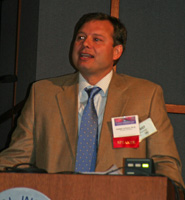 Joe LoTurco, Ph.D. is Professor of Physiology and Neurobiology at the University of Connecticut, Storrs. Dr. LoTurco graduated
from Williams College in 1984, completed doctoral training in Neuroscience at Stanford University in 1991, and postdoctoral
study in Genetics at Harvard Medical School in 1994. Dr. LoTurco has been on the faculty at the University of Connecticut,
Storrs since 1994. Dr. LoTurco has received grants from the NIH, from the March of Dimes and was awarded a Klingenstein Fellowship.
Dr. LoTurco has developed novel methodologies to study neuronal progenitor cells in the embryonic brain. With such methods
he has uncovered fundamental mechanisms necessary for formation of cerebral cortex. As a graduate student he helped to develop
a means of measuring functional ion channels on developing neurons. This lead to the subsequent identification of important
regulatory functions for ion channels in early neuron development. More recently Dr. LoTurco pioneered the use of RNA interference
to test the function of several genes in neuronal migration including those associated with epilepsy. With this recent technology
he developed unique animal models of neocortical malformations associated with seizure risk in humans. These models can now
be used as a basis for developing and testing early interventions that may reverse the formation of and ameliorate the effects
of malformations of cerebral cortex.
Joe LoTurco, Ph.D. is Professor of Physiology and Neurobiology at the University of Connecticut, Storrs. Dr. LoTurco graduated
from Williams College in 1984, completed doctoral training in Neuroscience at Stanford University in 1991, and postdoctoral
study in Genetics at Harvard Medical School in 1994. Dr. LoTurco has been on the faculty at the University of Connecticut,
Storrs since 1994. Dr. LoTurco has received grants from the NIH, from the March of Dimes and was awarded a Klingenstein Fellowship.
Dr. LoTurco has developed novel methodologies to study neuronal progenitor cells in the embryonic brain. With such methods
he has uncovered fundamental mechanisms necessary for formation of cerebral cortex. As a graduate student he helped to develop
a means of measuring functional ion channels on developing neurons. This lead to the subsequent identification of important
regulatory functions for ion channels in early neuron development. More recently Dr. LoTurco pioneered the use of RNA interference
to test the function of several genes in neuronal migration including those associated with epilepsy. With this recent technology
he developed unique animal models of neocortical malformations associated with seizure risk in humans. These models can now
be used as a basis for developing and testing early interventions that may reverse the formation of and ameliorate the effects
of malformations of cerebral cortex.
Daniel H. Lowenstein, M.D.
University of California, San Francisco
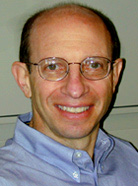 Daniel H. Lowenstein, M.D. is Vice-Chairman and Professor of Neurology, Director of the UCSF Epilepsy Center, Director of
Physician-Scientist Education and Training, and Associate Dean of Clinical and Translational Science at UCSF. Dr. Lowenstein
graduated from the University of Colorado with a degree in mathematics, and received his M.D. at Harvard Medical School. He
then did his residency in neurology at UCSF and a 2-year fellowship in Stanley Prusiner's laboratory, and went on to become
the Robert B. and Ellinor Aird Professor of Neurology and establish the Epilepsy Research Laboratory at UCSF. After serving
as Dean for Medical Education at Harvard from 2000-2002, he returned to the Bay Area to renew his academic posts at UCSF.
Dr Lowenstein is a clinician-scientist who has studied both basic science and clinical aspects of epilepsy. Dr Lowenstein's
laboratory studies have examined the fundamental mechanisms of neuronal network remodeling that occur during epileptogenesis-that
is, the process by which a normal network transforms into a hyperexcitable network capable of producing or relaying seizure
activity. His clinical research includes studies on the management and treatment of patients with status epilepticus, and
he was the principal investigator for a prospective, multicenter clinical trial sponsored by the NIH examining the potential
benefits of active treatment for patients with status epilepticus in the prehospital setting. In the last few years, he has
been a principal organizer of a large-scale, national effort to study the complex genetics of epilepsy. The project, known
as the "Epilepsy Phenome/Genome Project," was recently approved for funding by the NIH and will begin enrolling patients this
summer. Dr Lowenstein has been actively involved in advancing the cause of epilepsy at the national level, and has held many
leadership roles in professional organizations and foundations, including serving as the President of the American Epilepsy
Society in 2003-04. He was also a member of the Advisory Council of the National Institute of Neurological Disorders and Stroke
from 2000-2004. He has received many honors and awards for both his scientific work and his teaching accomplishments in medical
education.
Daniel H. Lowenstein, M.D. is Vice-Chairman and Professor of Neurology, Director of the UCSF Epilepsy Center, Director of
Physician-Scientist Education and Training, and Associate Dean of Clinical and Translational Science at UCSF. Dr. Lowenstein
graduated from the University of Colorado with a degree in mathematics, and received his M.D. at Harvard Medical School. He
then did his residency in neurology at UCSF and a 2-year fellowship in Stanley Prusiner's laboratory, and went on to become
the Robert B. and Ellinor Aird Professor of Neurology and establish the Epilepsy Research Laboratory at UCSF. After serving
as Dean for Medical Education at Harvard from 2000-2002, he returned to the Bay Area to renew his academic posts at UCSF.
Dr Lowenstein is a clinician-scientist who has studied both basic science and clinical aspects of epilepsy. Dr Lowenstein's
laboratory studies have examined the fundamental mechanisms of neuronal network remodeling that occur during epileptogenesis-that
is, the process by which a normal network transforms into a hyperexcitable network capable of producing or relaying seizure
activity. His clinical research includes studies on the management and treatment of patients with status epilepticus, and
he was the principal investigator for a prospective, multicenter clinical trial sponsored by the NIH examining the potential
benefits of active treatment for patients with status epilepticus in the prehospital setting. In the last few years, he has
been a principal organizer of a large-scale, national effort to study the complex genetics of epilepsy. The project, known
as the "Epilepsy Phenome/Genome Project," was recently approved for funding by the NIH and will begin enrolling patients this
summer. Dr Lowenstein has been actively involved in advancing the cause of epilepsy at the national level, and has held many
leadership roles in professional organizations and foundations, including serving as the President of the American Epilepsy
Society in 2003-04. He was also a member of the Advisory Council of the National Institute of Neurological Disorders and Stroke
from 2000-2004. He has received many honors and awards for both his scientific work and his teaching accomplishments in medical
education.
Brendan Malone
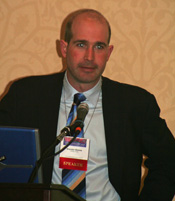 Brendan Malone, a 31-year-old high school teacher was a high school student himself when he experienced a severe head trauma
on the basketball court. About a month after the head injury, he had a grand mal seizure. A brain scan immediately confirmed
the 17-year-old's condition, and he started having seizures on a regular basis. While he got medication that helped control
them, the control came with a price; Brendan had to face a variety of side effects such as exhaustion and dizziness. While
he had always been a gifted student and athlete, medication dulled his mind and reduced his skill on the court. Brendan finished
high school and was accepted to Georgetown University. It was then that he realized the strict discipline that his disease
and his drug regimen required. Being away at school proved challenging to this regimen, and Brendan ended up leaving Georgetown.
After going home to the Chicago area, Brendan found a job and worked on his studies part-time to earn his degree. Brendan
says he is thankful that he has been able to control his seizures, due to the amazing advances in medications to treat epilepsy.
But he has had to change his medicine a variety of times because of serious side effects. One drug that effectively prevented
his seizures also caused him to lose an unhealthy amount of weight. He adds that it is sometimes hard to adhere to a strict
lifestyle of enough sleep, good nutrition, and no alcohol. If he doesn't, Brendan risks having a grand mal seizure that can
be debilitating for a day or more. Brendan says even medications that are effective and that he can tolerate make him tired
and lethargic much of the time. He admits that while he does get depressed thinking about what could have been, he considers
himself fortunate because he has been able to manage his disease. Brendan is committed to not letting epilepsy slow him down
and is currently working on getting his master's degree. He says research needs to continue until they find a cure-without
side effects.
Brendan Malone, a 31-year-old high school teacher was a high school student himself when he experienced a severe head trauma
on the basketball court. About a month after the head injury, he had a grand mal seizure. A brain scan immediately confirmed
the 17-year-old's condition, and he started having seizures on a regular basis. While he got medication that helped control
them, the control came with a price; Brendan had to face a variety of side effects such as exhaustion and dizziness. While
he had always been a gifted student and athlete, medication dulled his mind and reduced his skill on the court. Brendan finished
high school and was accepted to Georgetown University. It was then that he realized the strict discipline that his disease
and his drug regimen required. Being away at school proved challenging to this regimen, and Brendan ended up leaving Georgetown.
After going home to the Chicago area, Brendan found a job and worked on his studies part-time to earn his degree. Brendan
says he is thankful that he has been able to control his seizures, due to the amazing advances in medications to treat epilepsy.
But he has had to change his medicine a variety of times because of serious side effects. One drug that effectively prevented
his seizures also caused him to lose an unhealthy amount of weight. He adds that it is sometimes hard to adhere to a strict
lifestyle of enough sleep, good nutrition, and no alcohol. If he doesn't, Brendan risks having a grand mal seizure that can
be debilitating for a day or more. Brendan says even medications that are effective and that he can tolerate make him tired
and lethargic much of the time. He admits that while he does get depressed thinking about what could have been, he considers
himself fortunate because he has been able to manage his disease. Brendan is committed to not letting epilepsy slow him down
and is currently working on getting his master's degree. He says research needs to continue until they find a cure-without
side effects.
Jeffrey L. Noebels, M.D., Ph.D.
Baylor College of Medicine
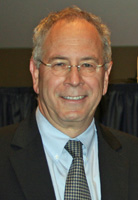 Jeffrey L. Noebels, M.D., Ph.D. is Professor of Neurology, Neuroscience, and Molecular Genetics, Director of the Neurobiology
of Disease Program at Baylor College of Medicine, and Director of the Blue Bird Circle Developmental Neurogenetics Laboratory.
Dr. Noebels graduated from Reed College, completed doctoral training in Neuroscience at Stanford University, and postdoctoral
study in Neurogenetics as a William G. Lennox Fellow at Childrens Hospital/Harvard Medical School. Following graduation from
Yale School of Medicine, he returned to neurogenetic research at Children's Hospital in Boston, and completed his residency
in Neurology at the Massachusetts General Hospital. Dr. Noebels pioneered a genetic approach to basic epilepsy research that
now stands on the verge of delivering discoveries of great importance to persons with inherited seizures. As a graduate student
he first recognized a link between a mutation in an ion channel gene and a pattern of abnormal firing seen in nerve terminals
during seizures. Armed with this clue, he began a search for EEG abnormalities in mouse mutants that led to the discovery
of the first single gene mouse model of epilepsy. Over the last few years, his laboratory has contributed to the identification
and characterization of many human and mouse epilepsy genes. Genetic mouse models of human inherited epilepsies now promise
to become critical experimental tools for the discovery of new therapies aimed at early prevention epilepsy in the developing
brain. Dr. Noebels has made exemplary contributions as a physician-scientist to professional training in epilepsy. As Professional
Advisory Board Chair of the Epilepsy Association of Houston/Gulf Coast, he founded the annual Houston Epilepsy Symposium.
He has served on the Board of Directors of the EFA and AES, and served as President of the American Epilepsy Society. Among
other honors, he has received the Michael Prize, Basil O'Connor Award, the Klingenstein Fellowship, and was named a Pew Biomedical
Scholar. He is an Ambassador of the International League Against Epilepsy and a recipient of the Novartis Prize in Epilepsy
Research. He has published extensively, including papers in the journals Science, Nature, Gene, Cell and Neuron, and received
a Javits Neuroscience Investigator Award from the NIH for his research on epilepsy genes.
Jeffrey L. Noebels, M.D., Ph.D. is Professor of Neurology, Neuroscience, and Molecular Genetics, Director of the Neurobiology
of Disease Program at Baylor College of Medicine, and Director of the Blue Bird Circle Developmental Neurogenetics Laboratory.
Dr. Noebels graduated from Reed College, completed doctoral training in Neuroscience at Stanford University, and postdoctoral
study in Neurogenetics as a William G. Lennox Fellow at Childrens Hospital/Harvard Medical School. Following graduation from
Yale School of Medicine, he returned to neurogenetic research at Children's Hospital in Boston, and completed his residency
in Neurology at the Massachusetts General Hospital. Dr. Noebels pioneered a genetic approach to basic epilepsy research that
now stands on the verge of delivering discoveries of great importance to persons with inherited seizures. As a graduate student
he first recognized a link between a mutation in an ion channel gene and a pattern of abnormal firing seen in nerve terminals
during seizures. Armed with this clue, he began a search for EEG abnormalities in mouse mutants that led to the discovery
of the first single gene mouse model of epilepsy. Over the last few years, his laboratory has contributed to the identification
and characterization of many human and mouse epilepsy genes. Genetic mouse models of human inherited epilepsies now promise
to become critical experimental tools for the discovery of new therapies aimed at early prevention epilepsy in the developing
brain. Dr. Noebels has made exemplary contributions as a physician-scientist to professional training in epilepsy. As Professional
Advisory Board Chair of the Epilepsy Association of Houston/Gulf Coast, he founded the annual Houston Epilepsy Symposium.
He has served on the Board of Directors of the EFA and AES, and served as President of the American Epilepsy Society. Among
other honors, he has received the Michael Prize, Basil O'Connor Award, the Klingenstein Fellowship, and was named a Pew Biomedical
Scholar. He is an Ambassador of the International League Against Epilepsy and a recipient of the Novartis Prize in Epilepsy
Research. He has published extensively, including papers in the journals Science, Nature, Gene, Cell and Neuron, and received
a Javits Neuroscience Investigator Award from the NIH for his research on epilepsy genes.
Manisha Patel, Ph.D.
University of Colorado Health Sciences Center
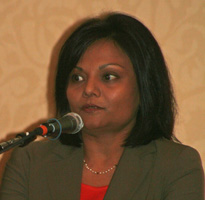 Manisha Patel, Ph.D. is Associate Professor in the Department of Pharmaceutical Sciences and Program in Neuroscience at the
University of Colorado Health Sciences Center in Denver. Dr. Patel received her Ph.D. in Pharmacology and Toxicology at Purdue
University and post-doctoral training in Neuroscience at Duke University. Dr. Patel's early work addressed a fundamental question
in the field of excitotoxicity; namely, how does excessive glutamate neurotransmission induce cell death? As a postdoctoral
researcher, she demonstrated a role for intracellular superoxide radicals in excitotoxic cell death emphasizing the overlapping
roles of oxidative stress and excitotoxic injury, two independent pathological mechanisms common to diverse neurological disorders.
A major focus of her laboratory is to identify the mechanisms by which reactive oxygen species control acute and chronic neuronal
injury associated with prolonged epileptic seizures. Dr. Patel's work has suggested a role of oxidative stress and mitochondrial
dysfunction in seizure-induced brain injury and seizure susceptibility. Her research is also focused on the development of
small molecular weight catalytic antioxidants as therapeutic agents for neurological diseases. Dr. Patel is a member of the
Epilepsy Foundation's Research Council, CURE Scientific Research Committee, and a NIH CSR review committee. She takes an active
role in the American Epilepsy Society's efforts in mentoring junior investigators. She is currently co-chair of the Junior
Investigators' Special Interest Group and member of the Mentoring Taskforce.
Manisha Patel, Ph.D. is Associate Professor in the Department of Pharmaceutical Sciences and Program in Neuroscience at the
University of Colorado Health Sciences Center in Denver. Dr. Patel received her Ph.D. in Pharmacology and Toxicology at Purdue
University and post-doctoral training in Neuroscience at Duke University. Dr. Patel's early work addressed a fundamental question
in the field of excitotoxicity; namely, how does excessive glutamate neurotransmission induce cell death? As a postdoctoral
researcher, she demonstrated a role for intracellular superoxide radicals in excitotoxic cell death emphasizing the overlapping
roles of oxidative stress and excitotoxic injury, two independent pathological mechanisms common to diverse neurological disorders.
A major focus of her laboratory is to identify the mechanisms by which reactive oxygen species control acute and chronic neuronal
injury associated with prolonged epileptic seizures. Dr. Patel's work has suggested a role of oxidative stress and mitochondrial
dysfunction in seizure-induced brain injury and seizure susceptibility. Her research is also focused on the development of
small molecular weight catalytic antioxidants as therapeutic agents for neurological diseases. Dr. Patel is a member of the
Epilepsy Foundation's Research Council, CURE Scientific Research Committee, and a NIH CSR review committee. She takes an active
role in the American Epilepsy Society's efforts in mentoring junior investigators. She is currently co-chair of the Junior
Investigators' Special Interest Group and member of the Mentoring Taskforce.
Denise Pease
 Denise Pease, a financial administrator with the City of New York, suffered a head injury that dramatically changed her life.
Twelve years ago, Denise was in a cab when it was involved in an accident. She hit her head and suffered a severe trauma.
Not knowing the extent of the damage, Denise, who was a senior bank regulator, was gradually losing her ability to read, write,
and speak. But she was still unaware of the cause and the fact that she was actually having minor seizures. Over a year and
a half later, after a long international trip in which she didn't get much sleep, Denise had a tonic-clonic seizure and was
finally accurately diagnosed. She then began a five-year odyssey of finding the right treatment. While Denise was on disability
leave from work she spent a lot of time going to specialists, trying different medicine, and getting speech and physical therapy.
She says her efforts paid off. She found a drug that she takes three times a day and another she takes when she feels a seizure
coming on. With her seizures under control, she's back on the job doing what she loves. Denise does a lot of public speaking
about epilepsy and the need to get properly diagnosed and treated. She says that there are many more treatment options available
now than there were twenty years ago. She says that without them, she wouldn't be here right now. Additionally, while she
is always looking for opportunities to fight the stigma of epilepsy, she believes the public still has much to learn about
the disease and the challenge of having it.
Denise Pease, a financial administrator with the City of New York, suffered a head injury that dramatically changed her life.
Twelve years ago, Denise was in a cab when it was involved in an accident. She hit her head and suffered a severe trauma.
Not knowing the extent of the damage, Denise, who was a senior bank regulator, was gradually losing her ability to read, write,
and speak. But she was still unaware of the cause and the fact that she was actually having minor seizures. Over a year and
a half later, after a long international trip in which she didn't get much sleep, Denise had a tonic-clonic seizure and was
finally accurately diagnosed. She then began a five-year odyssey of finding the right treatment. While Denise was on disability
leave from work she spent a lot of time going to specialists, trying different medicine, and getting speech and physical therapy.
She says her efforts paid off. She found a drug that she takes three times a day and another she takes when she feels a seizure
coming on. With her seizures under control, she's back on the job doing what she loves. Denise does a lot of public speaking
about epilepsy and the need to get properly diagnosed and treated. She says that there are many more treatment options available
now than there were twenty years ago. She says that without them, she wouldn't be here right now. Additionally, while she
is always looking for opportunities to fight the stigma of epilepsy, she believes the public still has much to learn about
the disease and the challenge of having it.
Asla Pitkänen, M.D., Ph.D.
A.I. Virtanen Institute for Molecular Sciences in the University of Kuopio, Finland
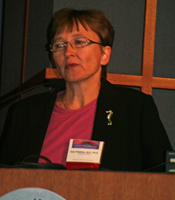 She received her M.D. in 1984, M. Sc. in biochemistry in 1987, Ph.D. in medicine in 1987, and Ph.D. in biochemistry in 1989
in University of Kuopio. After receiving her M.D., Dr Pitkänen worked as a neurology resident in the National Vaajasalo Epilepsy
Center in Kuopio, Finland. In 1989-1992 she did her postdoctoral training at the Salk Institute in La Jolla, CA. In 2004-2005
she spent a sabbatical year in University of Pennsylvania, Philadelphia, PA. Dr. Pitkänen's primary research focus is investigating
the functional neuroanatomy of the medial temporal lobe, how the connectivity changes during epileptogenesis, and what are
the molecular alterations underlying epileptogenic network reorganization. Studies are done in animal models of human epileptogenesis
(traumatic brain injury, stroke, status epilepticus) and human epileptic tissue. Goal is to develop novel therapeutic strategies
for antiepileptogenesis and disease modification. Dr. Pitkänen has served on a variety of national and international committees,
including Finnish Epilepsy Society, Brain Research Society of Finland, NIH-NINDS, and ILAE. She is a new Secretary-General
of Federation of European Neuroscience Societies (FENS). She serves in the Editorial Board of 6 journals and is the Section
Editor of Systems Neurosciences for Neuroscience and Co-Editor-in-Chief of Epilepsy Research. She has published 200 original
articles on experimental and clinical epilepsy and is an editor of three books.
She received her M.D. in 1984, M. Sc. in biochemistry in 1987, Ph.D. in medicine in 1987, and Ph.D. in biochemistry in 1989
in University of Kuopio. After receiving her M.D., Dr Pitkänen worked as a neurology resident in the National Vaajasalo Epilepsy
Center in Kuopio, Finland. In 1989-1992 she did her postdoctoral training at the Salk Institute in La Jolla, CA. In 2004-2005
she spent a sabbatical year in University of Pennsylvania, Philadelphia, PA. Dr. Pitkänen's primary research focus is investigating
the functional neuroanatomy of the medial temporal lobe, how the connectivity changes during epileptogenesis, and what are
the molecular alterations underlying epileptogenic network reorganization. Studies are done in animal models of human epileptogenesis
(traumatic brain injury, stroke, status epilepticus) and human epileptic tissue. Goal is to develop novel therapeutic strategies
for antiepileptogenesis and disease modification. Dr. Pitkänen has served on a variety of national and international committees,
including Finnish Epilepsy Society, Brain Research Society of Finland, NIH-NINDS, and ILAE. She is a new Secretary-General
of Federation of European Neuroscience Societies (FENS). She serves in the Editorial Board of 6 journals and is the Section
Editor of Systems Neurosciences for Neuroscience and Co-Editor-in-Chief of Epilepsy Research. She has published 200 original
articles on experimental and clinical epilepsy and is an editor of three books.
Judith L. Rapoport, M.D.
National Institute of Mental Health
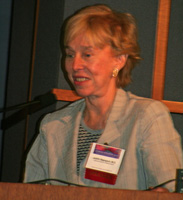 Judith L. Rapoport M.D. is Chief of the Child Psychiatry Branch, NIMH. She is a graduate of Harvard Medical School. She did
her clinical and research training at the Massachusetts Mental Health Center (Boston), Children's Hospital (DC), and the Karolinska
Hospital (Stockholm). Her research has focused on diagnosis in child psychiatry, Attention Deficit Hyperactivity Disorder
and Obsessive Compulsive Disorder. Over the past decade, her group has been studying the clinical phenomenology, neurobiology
and treatment of Childhood Onset Schizophrenia, as well as normal and abnormal brain development in childhood and adolescence.
She is an author or co-author of over 300 scientific papers, a member of the Institute of Medicine, and a Fellow of the American
Academy of Arts and Sciences.
Judith L. Rapoport M.D. is Chief of the Child Psychiatry Branch, NIMH. She is a graduate of Harvard Medical School. She did
her clinical and research training at the Massachusetts Mental Health Center (Boston), Children's Hospital (DC), and the Karolinska
Hospital (Stockholm). Her research has focused on diagnosis in child psychiatry, Attention Deficit Hyperactivity Disorder
and Obsessive Compulsive Disorder. Over the past decade, her group has been studying the clinical phenomenology, neurobiology
and treatment of Childhood Onset Schizophrenia, as well as normal and abnormal brain development in childhood and adolescence.
She is an author or co-author of over 300 scientific papers, a member of the Institute of Medicine, and a Fellow of the American
Academy of Arts and Sciences.
Jenna L. Rickus
Purdue University
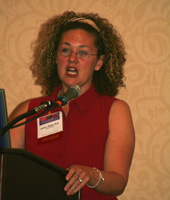 Jenna L. Rickus, Ph.D. is an Assistant Professor of Biological Engineering in the department of Agricultural and Biological
Engineering and the Weldon School of Biomedical Engineering, and is co-leader of the Physiological Sensing Facility in the
Bindley Bioscience Center. Dr. Rickus graduated from Purdue University with degrees in agricultural and biological engineering
and biochemistry. She completed doctoral training in neuroscience at UCLA and was the first graduate of the NeuroEngineering
program. At UCLA she was co-trainined in cellular and molecular neurobiology and in materials science research groups. During
her graduate studies Dr. Rickus developed novel optical materials for measuring neurotransmitters and for interfacing with
neurons. Now at Purdue, Dr. Rickus continues to develop novel biologically functional materials that mimic and modulate cell
physiology. These materials have broad application in neural implants, biosensors, and artificial extracellular niches. Dr.
Rickus brings this work and a highly interdisciplinary background to bear on the problem of epilepsy. With her colleage, Dr.
Pedro Irazoqui, she is pioneering hybrid cell silicon devices as a novel type of neural prosthesis. These devices integrate
living cells as an engineered component, enabling closed loop control of neurotransmitter delivery to the brain.
Jenna L. Rickus, Ph.D. is an Assistant Professor of Biological Engineering in the department of Agricultural and Biological
Engineering and the Weldon School of Biomedical Engineering, and is co-leader of the Physiological Sensing Facility in the
Bindley Bioscience Center. Dr. Rickus graduated from Purdue University with degrees in agricultural and biological engineering
and biochemistry. She completed doctoral training in neuroscience at UCLA and was the first graduate of the NeuroEngineering
program. At UCLA she was co-trainined in cellular and molecular neurobiology and in materials science research groups. During
her graduate studies Dr. Rickus developed novel optical materials for measuring neurotransmitters and for interfacing with
neurons. Now at Purdue, Dr. Rickus continues to develop novel biologically functional materials that mimic and modulate cell
physiology. These materials have broad application in neural implants, biosensors, and artificial extracellular niches. Dr.
Rickus brings this work and a highly interdisciplinary background to bear on the problem of epilepsy. With her colleage, Dr.
Pedro Irazoqui, she is pioneering hybrid cell silicon devices as a novel type of neural prosthesis. These devices integrate
living cells as an engineered component, enabling closed loop control of neurotransmitter delivery to the brain.
John L. R. Rubenstein, M.D., Ph.D.
UCSF School of Medicine
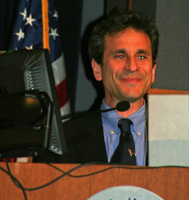 John L. R. Rubenstein, M.D., Ph.D. is the Nina Ireland Distinguished Professor in Child Psychiatry at UCSF. Dr. Rubenstein
graduated in Chemistry from Stanford University, completed doctoral training in Biophysics at Stanford University, and postdoctoral
research training in Developmental Biology at the Pasteur Institute and Stanford. Following graduation from Stanford School
of Medicine, he completed his residency in Adult and Child Psychiatry at Stanford. In 1991 he joined the faculty at UCSF.
Dr. Rubenstein is a leader in elucidating genetic mechanisms that control patterning and differentiation of the embryonic
mouse forebrain. He identified key genes and processes that define distinct progenitor domains that generate specific programs
of neurogenesis, cell migration, and connectivity. His findings include: 1) With Luis Puelles, formulating a model of embryonic
forebrain organization; 2) Defining a forebrain patterning center expressing FGFs that controls frontal cortex specification
and size; 3) Identifying transcription factors that control regional specification of brain subdivisions (Nkx2.2 for 5HT neurons,
Nkx6.1 for motor neurons, & Nkx2.1 for globus pallidus principal neurons); 4) Linking of regional and cell-type specification
in the telencephalon; 5) Demonstrating that cortical inhibitory neurons are generated in the basal ganglia and tangentially
migrate to the cortex; 6) Demonstrating that the Dlx gene family controls specification, differentiation and function of forebrain
GABAergic neurons; lack of Dlx1 results in age-dependent cortical interneuron death and epilepsy. Dr. Rubenstein has made
exemplary contributions as a physician-scientist to professional training in developmental neurobiology and is particularly
interested in genetic mechanisms that cause neuropsychiatric disorders and epilepsy. He has served on the scientific advisory
board for NARSAD and scientific review board for Cure Autism Now. He has published extensively, including papers in the journals
Science, Nature, Cell, Neuron, Nature Neuroscience, Development and Genes & Development. He is a member of the Institute of
Medicine.
John L. R. Rubenstein, M.D., Ph.D. is the Nina Ireland Distinguished Professor in Child Psychiatry at UCSF. Dr. Rubenstein
graduated in Chemistry from Stanford University, completed doctoral training in Biophysics at Stanford University, and postdoctoral
research training in Developmental Biology at the Pasteur Institute and Stanford. Following graduation from Stanford School
of Medicine, he completed his residency in Adult and Child Psychiatry at Stanford. In 1991 he joined the faculty at UCSF.
Dr. Rubenstein is a leader in elucidating genetic mechanisms that control patterning and differentiation of the embryonic
mouse forebrain. He identified key genes and processes that define distinct progenitor domains that generate specific programs
of neurogenesis, cell migration, and connectivity. His findings include: 1) With Luis Puelles, formulating a model of embryonic
forebrain organization; 2) Defining a forebrain patterning center expressing FGFs that controls frontal cortex specification
and size; 3) Identifying transcription factors that control regional specification of brain subdivisions (Nkx2.2 for 5HT neurons,
Nkx6.1 for motor neurons, & Nkx2.1 for globus pallidus principal neurons); 4) Linking of regional and cell-type specification
in the telencephalon; 5) Demonstrating that cortical inhibitory neurons are generated in the basal ganglia and tangentially
migrate to the cortex; 6) Demonstrating that the Dlx gene family controls specification, differentiation and function of forebrain
GABAergic neurons; lack of Dlx1 results in age-dependent cortical interneuron death and epilepsy. Dr. Rubenstein has made
exemplary contributions as a physician-scientist to professional training in developmental neurobiology and is particularly
interested in genetic mechanisms that cause neuropsychiatric disorders and epilepsy. He has served on the scientific advisory
board for NARSAD and scientific review board for Cure Autism Now. He has published extensively, including papers in the journals
Science, Nature, Cell, Neuron, Nature Neuroscience, Development and Genes & Development. He is a member of the Institute of
Medicine.
W. Mark Saltzman, Ph.D.
Yale University Biomedical Engineering
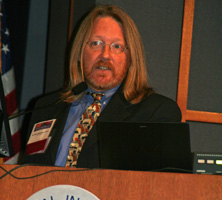 W. Mark Saltzman graduated with distinction from Iowa State University, earning a B.S. in Chemical Engineering in May of
1981. He obtained his graduate training at the Massachusetts Institute of Technology, earning a M.S. in Chemical Engineering
in 1984 and a Ph.D. in Medical Engineering in 1987. His research interests include drug delivery to the brain, materials for
vaccine delivery, and tissue engineering; he has published over 150 research papers, 3 single-author books, 2 edited books,
and 10 patents in these fields. Dr. Saltzman joined the faculty at The Johns Hopkins University in 1987 as Assistant Professor
of Chemical Engineering with a joint appointment in the Department of Biomedical Engineering at The Johns Hopkins School of
Medicine; he was promoted to Associate Professor of Chemical Engineering in 1992 and Professor in 1995. In 1996, Dr. Saltzman
accepted a position as Professor of Chemical Engineering at Cornell University. In 1990, Dr. Saltzman received the Camille
and Henry Dreyfus Foundation Teacher-Scholar Award. He also received the Allan C. Davis Medal as Maryland's Outstanding Young
Engineer in 1995, the Controlled Release Society Young Investigator Award in 1996, and was elected a fellow of the American
Institute of Biological and Medical Engineers in 1997. Dr. Saltzman has received awards for teaching from Johns Hopkins and
Cornell. In 2000, he was honored by receiving the Professional Progress in Engineering Award from Iowa State University and
being named the Britton Chance Distinguished Lecturer in Engineering and Medicine at the University of Pennsylvania and the
Distinguished Lecturer of the Biomedical Engineering Society in 2004. In 2001, he was selected to be the first holder of the
BP Amoco/H. Laurance Fuller Chair in Chemical Engineering at Cornell. He joined the faculty at Yale University, as the Goizueta
Foundation Professor of Chemical and Biomedical Engineering, in July of 2002 and became the first chair of Yale's Department
of Biomedical Engineering in 2003.
W. Mark Saltzman graduated with distinction from Iowa State University, earning a B.S. in Chemical Engineering in May of
1981. He obtained his graduate training at the Massachusetts Institute of Technology, earning a M.S. in Chemical Engineering
in 1984 and a Ph.D. in Medical Engineering in 1987. His research interests include drug delivery to the brain, materials for
vaccine delivery, and tissue engineering; he has published over 150 research papers, 3 single-author books, 2 edited books,
and 10 patents in these fields. Dr. Saltzman joined the faculty at The Johns Hopkins University in 1987 as Assistant Professor
of Chemical Engineering with a joint appointment in the Department of Biomedical Engineering at The Johns Hopkins School of
Medicine; he was promoted to Associate Professor of Chemical Engineering in 1992 and Professor in 1995. In 1996, Dr. Saltzman
accepted a position as Professor of Chemical Engineering at Cornell University. In 1990, Dr. Saltzman received the Camille
and Henry Dreyfus Foundation Teacher-Scholar Award. He also received the Allan C. Davis Medal as Maryland's Outstanding Young
Engineer in 1995, the Controlled Release Society Young Investigator Award in 1996, and was elected a fellow of the American
Institute of Biological and Medical Engineers in 1997. Dr. Saltzman has received awards for teaching from Johns Hopkins and
Cornell. In 2000, he was honored by receiving the Professional Progress in Engineering Award from Iowa State University and
being named the Britton Chance Distinguished Lecturer in Engineering and Medicine at the University of Pennsylvania and the
Distinguished Lecturer of the Biomedical Engineering Society in 2004. In 2001, he was selected to be the first holder of the
BP Amoco/H. Laurance Fuller Chair in Chemical Engineering at Cornell. He joined the faculty at Yale University, as the Goizueta
Foundation Professor of Chemical and Biomedical Engineering, in July of 2002 and became the first chair of Yale's Department
of Biomedical Engineering in 2003.
R. Jude Samulski, Ph.D.
University of North Carolina at Chapel Hill
Gene Therapy Center / Department of Pharmacology
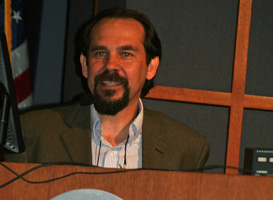 R. Jude Samulski, PhD is a Professor of Pharmacology and Director of the Gene Therapy Center at the University of North Carolina
at Chapel Hill School of Medicine. Dr. Samulski graduated from Clemson University and earned his PhD in Molecular Biology
from the University of Florida at Gainesville. He completed a postdoctoral research fellowship in the Department of Microbiology
at the State University of New York at Stony Brook and Princeton University. Dr. Samulski worked as an Assistant and Associate
Professor in the Department of Biological Sciences at the University of Pittsburgh, where he received the President's Distinguished
Research Award, before beginning his work at UNC-Chapel Hill. Dr. Samulski's research focuses on the study of the dependent
parvovirus adeno-associated virus. AAV is the only known DNA animal virus which requires co-infection by a second unrelated
virus in order to undergo productive infection. The ultimate goal of the Gene Therapy Center is to facilitate the progression
and translation of gene therapy research from the laboratory bench into Phase I clinical trials for the treatment of human
disease. Dr. Samulski has cloned the AAV genome into the bacterial plasmid pBR322 and demonstrated that this recombinant clone
is infectious when introduced into human cells co-infected with a helper virus. He has established successful and long term
gene expression over a year, which directly addresses the issue of molecular therapy required for genetic disorders. One of
Dr. Samulski's current goals is to continue to derive delivery systems for use in gene therapy.
R. Jude Samulski, PhD is a Professor of Pharmacology and Director of the Gene Therapy Center at the University of North Carolina
at Chapel Hill School of Medicine. Dr. Samulski graduated from Clemson University and earned his PhD in Molecular Biology
from the University of Florida at Gainesville. He completed a postdoctoral research fellowship in the Department of Microbiology
at the State University of New York at Stony Brook and Princeton University. Dr. Samulski worked as an Assistant and Associate
Professor in the Department of Biological Sciences at the University of Pittsburgh, where he received the President's Distinguished
Research Award, before beginning his work at UNC-Chapel Hill. Dr. Samulski's research focuses on the study of the dependent
parvovirus adeno-associated virus. AAV is the only known DNA animal virus which requires co-infection by a second unrelated
virus in order to undergo productive infection. The ultimate goal of the Gene Therapy Center is to facilitate the progression
and translation of gene therapy research from the laboratory bench into Phase I clinical trials for the treatment of human
disease. Dr. Samulski has cloned the AAV genome into the bacterial plasmid pBR322 and demonstrated that this recombinant clone
is infectious when introduced into human cells co-infected with a helper virus. He has established successful and long term
gene expression over a year, which directly addresses the issue of molecular therapy required for genetic disorders. One of
Dr. Samulski's current goals is to continue to derive delivery systems for use in gene therapy.
Helen E. Scharfman, PhD
Helen Hayes Hospital
Columbia University
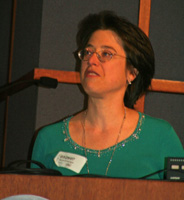 Dr. Scharfman graduated from Vassar College, completed doctoral training in Pharmacology at the Uniformed Services University
of the Health Sciences, and postdoctoral study in Neurological Surgery at the University of Washington. She was then a Research
Associate in the Department of Neurobiology and Behavior at the State University of Stony Brook before joining Columbia University
where she currently holds appointments in the Departments of Pharmacology and Neurology. Dr. Scharfman has provided fundamental
insight into the basic science of epileptogenesis and epilepsy using animal models of temporal lobe epilepsy. As a graduate
student she established differential dendritic and somatic responses to the inhibitory transmitter GABA in rat cortical neurons.
As a postdoctoral fellow she was the first to characterize mossy cells in the hilus of the dentate gyrus, neurons that are
vulnerable in both animal models and in man. She then established reasons for their vulnerability, and clarified their connectivity.
In her own laboratory, she expanded studies of vulnerable neurons to the entorhinal cortical pyramidal cells of layer III,
and began experiments that contributed to the now widely-accepted appreciation for the role of the neurotrophin BDNF in epilepsy.
Her discovery of abnormal activity in newly-born granule cells after seizure-induced neurogenesis provided a new perspective
on the potential for neurogenesis to influence epileptogenesis. Recent endeavors have led to insights into the influence of
gonadal steroids in epilepsy, and new animal models to better understand basic mechanisms of epilepsy. Dr. Scharfman has contributed
broadly in basic and translational neuroscience. She has served on the Professional Advisory Board of the Epilepsy Foundation,
the Scientific Advisory Board of CURE, committees of the American Epilepsy Society and Epilepsy Foundation, and served as
a reviewer for numerous national and international funding organizations, as well as editorial boards of Epilepsia, Epilepsy
Research, and Epilepsy and Behavior. She was named the New York State Department of Health Employee of the Year in 2005 for
establishing a research center at Helen Hayes Hospital to promote translational research in neural recovery from brain and
spinal cord injury. She has published extensively, including over 100 peer-reviewed articles and 4 books. She has been funded
by the NIH since starting her own laboratory in 1992.
Dr. Scharfman graduated from Vassar College, completed doctoral training in Pharmacology at the Uniformed Services University
of the Health Sciences, and postdoctoral study in Neurological Surgery at the University of Washington. She was then a Research
Associate in the Department of Neurobiology and Behavior at the State University of Stony Brook before joining Columbia University
where she currently holds appointments in the Departments of Pharmacology and Neurology. Dr. Scharfman has provided fundamental
insight into the basic science of epileptogenesis and epilepsy using animal models of temporal lobe epilepsy. As a graduate
student she established differential dendritic and somatic responses to the inhibitory transmitter GABA in rat cortical neurons.
As a postdoctoral fellow she was the first to characterize mossy cells in the hilus of the dentate gyrus, neurons that are
vulnerable in both animal models and in man. She then established reasons for their vulnerability, and clarified their connectivity.
In her own laboratory, she expanded studies of vulnerable neurons to the entorhinal cortical pyramidal cells of layer III,
and began experiments that contributed to the now widely-accepted appreciation for the role of the neurotrophin BDNF in epilepsy.
Her discovery of abnormal activity in newly-born granule cells after seizure-induced neurogenesis provided a new perspective
on the potential for neurogenesis to influence epileptogenesis. Recent endeavors have led to insights into the influence of
gonadal steroids in epilepsy, and new animal models to better understand basic mechanisms of epilepsy. Dr. Scharfman has contributed
broadly in basic and translational neuroscience. She has served on the Professional Advisory Board of the Epilepsy Foundation,
the Scientific Advisory Board of CURE, committees of the American Epilepsy Society and Epilepsy Foundation, and served as
a reviewer for numerous national and international funding organizations, as well as editorial boards of Epilepsia, Epilepsy
Research, and Epilepsy and Behavior. She was named the New York State Department of Health Employee of the Year in 2005 for
establishing a research center at Helen Hayes Hospital to promote translational research in neural recovery from brain and
spinal cord injury. She has published extensively, including over 100 peer-reviewed articles and 4 books. She has been funded
by the NIH since starting her own laboratory in 1992.
Ingrid E. Scheffer, MB BS, FRACP, PhD
The University of Melbourne, Australia
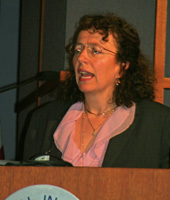 Ingrid Scheffer is Professor of Paediatric Neurology Research at the University of Melbourne in the Department of Medicine
at Austin Health and the Department of Paediatrics at the Royal Children's Hospital. Dr Scheffer's work in the genetics of
epilepsy with Dr Samuel Berkovic has led the field of human epilepsy genetics since 1995 when, in collaboration with Grant
Sutherland and John Mulley at the Women's and Children's Hospital in Adelaide and Ortrud Steinlein from Germany, they discovered
the first idiopathic epilepsy gene. Subsequently their work has identified eight of the fifteen genes known for idiopathic
epilepsy. Dr Scheffer graduated in medicine from Monash University and specialised in paediatrics at the Royal Children's
Hospital in Melbourne. She trained in child neurology at the Great Ormond Street Hospital for Sick Children in London followed
by her PhD at the University of Melbourne while completing an epilepsy fellowship at Austin Health. Her PhD resulted in the
description of four new inherited epilepsy syndromes and changed concepts about the genetic inter-relationship of febrile
seizures and epilepsy. She was awarded the Chancellor's Prize for an outstanding PhD from the University of Melbourne and
a commendation for the Premier's award for medical research. She received the Post-doctoral investigator's award from the
National Association of Australian Research Fellows in 2003. She was an inaugural NHMRC Practitioner Fellow from 2001. Dr
Scheffer has more than 100 peer-reviewd papers and has published in major journals such as Nature Genetics (5), Cell, Neuron,
and The Lancet. She is a chief investigator on her second NHMRC program grant with molecular geneticists, physiologists, imaging
specialists and clinical researchers where a truly collaborative approach is modelled to investigate the neurobiology of seizure
disorders with the ultimate aim of helping people with epilepsy.
Ingrid Scheffer is Professor of Paediatric Neurology Research at the University of Melbourne in the Department of Medicine
at Austin Health and the Department of Paediatrics at the Royal Children's Hospital. Dr Scheffer's work in the genetics of
epilepsy with Dr Samuel Berkovic has led the field of human epilepsy genetics since 1995 when, in collaboration with Grant
Sutherland and John Mulley at the Women's and Children's Hospital in Adelaide and Ortrud Steinlein from Germany, they discovered
the first idiopathic epilepsy gene. Subsequently their work has identified eight of the fifteen genes known for idiopathic
epilepsy. Dr Scheffer graduated in medicine from Monash University and specialised in paediatrics at the Royal Children's
Hospital in Melbourne. She trained in child neurology at the Great Ormond Street Hospital for Sick Children in London followed
by her PhD at the University of Melbourne while completing an epilepsy fellowship at Austin Health. Her PhD resulted in the
description of four new inherited epilepsy syndromes and changed concepts about the genetic inter-relationship of febrile
seizures and epilepsy. She was awarded the Chancellor's Prize for an outstanding PhD from the University of Melbourne and
a commendation for the Premier's award for medical research. She received the Post-doctoral investigator's award from the
National Association of Australian Research Fellows in 2003. She was an inaugural NHMRC Practitioner Fellow from 2001. Dr
Scheffer has more than 100 peer-reviewd papers and has published in major journals such as Nature Genetics (5), Cell, Neuron,
and The Lancet. She is a chief investigator on her second NHMRC program grant with molecular geneticists, physiologists, imaging
specialists and clinical researchers where a truly collaborative approach is modelled to investigate the neurobiology of seizure
disorders with the ultimate aim of helping people with epilepsy.
Shlomo Shinnar, MD, PhD
Montefiore Medical Center
Albert Einstein College of Medicine
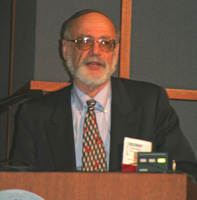 Shlomo Shinnar, MD, PhD is Professor of Neurology and Pediatrics, Hyman Climenko Professor of Neuroscience Research and Director
of the Comprehensive Epilepsy Management Center at Montefiore Medical Center and the Albert Einstein College of Medicine,
Bronx, NY. Dr Shinnar received a Bachelor of Arts degree, summa cum laude, in physics (1971) from Columbia College, New York.
From 1971 to 1978, he was a predoctoral fellow with the National Institutes of Health (NIH) Medical Scientist Training Program
at Albert Einstein College of Medicine, where he received a doctor of philosophy degree (1977) in neurophysiology and a doctor
of medicine degree (1978). He then trained in Pediatrics and Child Neurology and the Johns Hopkins Hospital, Baltimore, MD.
He has been at Montefiore Medical Center and the Albert Einstein College of Medicine since 1983. Dr Shinnar is board-certified
by the American Board of Psychiatry and Neurology (in neurology, with special competence in child neurology and added qualification
in clinical neurophysiology) and the American Board of Pediatrics. He is a Fellow of the American Academy of Neurology and
the American Academy of Pediatrics and a member of the American Neurological Association and the Society for Pediatric Research.
He has been active in the American Epilepsy Society and the Epilepsy Foundation of America. He has also been active in local
epilepsy societies, including the Epilepsy Foundation of Southern New York and the Epilepsy Institute. Dr Shinnar is well
known for his research on a variety of topics relating to childhood seizures and language regression, including when to initiate
and discontinue antiepileptic drug therapy, prognosis following a first seizure, prognosis following discontinuation of medications
in children with seizures, status epilepticus, febrile seizures, and language regression and it's relationship to autism and
seizures. His major contributions have focused on epidemiological investigations of long term outcomes of childhood seizures.
He has been the principal investigator and coinvestigator on a variety of NIH-funded research studies. He is the Principal
Investigator of a large multicenter study "Consequences of Prolonged Febrile Seizures in Childhood". He is also a member of
the executive committee and co-investigator of a large multicenter NIH funded study "Childhood Absence Epilepsy: Rx, PK-PD-Pharmcogenetics".
He has also been involved in industry-sponsored trials of new medications. Dr Shinnar is a recipient of the Research Recognition
Award of the American Epilepsy Society. He has authored over 150 papers and is the senior editor of the book Childhood Seizures
and coeditor of the recently published Febrile Seizures. The current research efforts combine careful epidemiological approaches
with modern imaging, neuropshysiological and neuropsychological studies to examine the causes and long term consequences of
childhood seizures.
Shlomo Shinnar, MD, PhD is Professor of Neurology and Pediatrics, Hyman Climenko Professor of Neuroscience Research and Director
of the Comprehensive Epilepsy Management Center at Montefiore Medical Center and the Albert Einstein College of Medicine,
Bronx, NY. Dr Shinnar received a Bachelor of Arts degree, summa cum laude, in physics (1971) from Columbia College, New York.
From 1971 to 1978, he was a predoctoral fellow with the National Institutes of Health (NIH) Medical Scientist Training Program
at Albert Einstein College of Medicine, where he received a doctor of philosophy degree (1977) in neurophysiology and a doctor
of medicine degree (1978). He then trained in Pediatrics and Child Neurology and the Johns Hopkins Hospital, Baltimore, MD.
He has been at Montefiore Medical Center and the Albert Einstein College of Medicine since 1983. Dr Shinnar is board-certified
by the American Board of Psychiatry and Neurology (in neurology, with special competence in child neurology and added qualification
in clinical neurophysiology) and the American Board of Pediatrics. He is a Fellow of the American Academy of Neurology and
the American Academy of Pediatrics and a member of the American Neurological Association and the Society for Pediatric Research.
He has been active in the American Epilepsy Society and the Epilepsy Foundation of America. He has also been active in local
epilepsy societies, including the Epilepsy Foundation of Southern New York and the Epilepsy Institute. Dr Shinnar is well
known for his research on a variety of topics relating to childhood seizures and language regression, including when to initiate
and discontinue antiepileptic drug therapy, prognosis following a first seizure, prognosis following discontinuation of medications
in children with seizures, status epilepticus, febrile seizures, and language regression and it's relationship to autism and
seizures. His major contributions have focused on epidemiological investigations of long term outcomes of childhood seizures.
He has been the principal investigator and coinvestigator on a variety of NIH-funded research studies. He is the Principal
Investigator of a large multicenter study "Consequences of Prolonged Febrile Seizures in Childhood". He is also a member of
the executive committee and co-investigator of a large multicenter NIH funded study "Childhood Absence Epilepsy: Rx, PK-PD-Pharmcogenetics".
He has also been involved in industry-sponsored trials of new medications. Dr Shinnar is a recipient of the Research Recognition
Award of the American Epilepsy Society. He has authored over 150 papers and is the senior editor of the book Childhood Seizures
and coeditor of the recently published Febrile Seizures. The current research efforts combine careful epidemiological approaches
with modern imaging, neuropshysiological and neuropsychological studies to examine the causes and long term consequences of
childhood seizures.
Alcino Silva, Ph.D.
University of California, Los Angeles
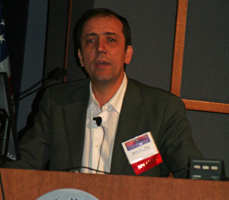 Dr. Alcino Silva received his bachelor's degree from Cook College at Rutgers University and his Ph.D. in human genetics from
the University of Utah. He underwent his post-doctoral fellowship in Dr. Susumu Tonegawa's laboratory at Massachusetts Institute
of Technology. Dr. Silva joined UCLA faculty in 1998 and is currently Professor of Neurobiology, Psychiatry & Biobehavioral
Sciences, and Psychology. His laboratory is studying the biology of learning and memory with a focus on hippocampal/prefrontal
memory mechanisms. His laboratory is also interested in applying their findings to the development of treatments for learning
and memory disorders, such as those associated with Neurofibromatosis type I, Tuberous Sclerosis and Schizophrenia. Dr. Alcino
Silva is the founder of the molecular and cellular cognition field and the first president of the Molecular and Cellular Cognition
Society. He currently heads the International Network for the Study of Exceptional Cognition, The Learning Disabilities Network,
the Center for Genetic Studies of Cortical Plasticity, as well as the Plasticity and Learning branch of the Brain Research
Institute at UCLA.
Dr. Alcino Silva received his bachelor's degree from Cook College at Rutgers University and his Ph.D. in human genetics from
the University of Utah. He underwent his post-doctoral fellowship in Dr. Susumu Tonegawa's laboratory at Massachusetts Institute
of Technology. Dr. Silva joined UCLA faculty in 1998 and is currently Professor of Neurobiology, Psychiatry & Biobehavioral
Sciences, and Psychology. His laboratory is studying the biology of learning and memory with a focus on hippocampal/prefrontal
memory mechanisms. His laboratory is also interested in applying their findings to the development of treatments for learning
and memory disorders, such as those associated with Neurofibromatosis type I, Tuberous Sclerosis and Schizophrenia. Dr. Alcino
Silva is the founder of the molecular and cellular cognition field and the first president of the Molecular and Cellular Cognition
Society. He currently heads the International Network for the Study of Exceptional Cognition, The Learning Disabilities Network,
the Center for Genetic Studies of Cortical Plasticity, as well as the Plasticity and Learning branch of the Brain Research
Institute at UCLA.
Jeff Smith
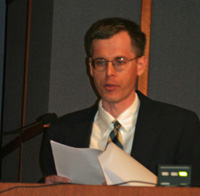 Jeff started having seizures when he was 9 years old. Most of his seizures occurred at night while he was sleeping. His parents
would find him on the floor beside his bed, but there was little they could do to help. While his medication helped to alleviate
the most severe of his seizures, he continued to have minor seizures that caused tremors in his right hand, making it difficult
to write and perform other motor functions. The medication came with side effects that would cause Jeff to be tired and fatigued.
While a college student he tried to get relief from these side effects with a different medication, but it unfortunately did
not work. As a result, he ended up being hospitalized after having five generalized seizures in one hour. Eventually he was
able to find a combination of medications that limited his night time seizures and provided some control but could not eliminate
the side effects. In the late 1990's, Jeff decided to look for alternatives. He went through a series of tests and brain scans
to determine if he was a good candidate for surgery. After reviewing the scans, doctors had not gained enough information
to offer surgery as an option. In 2005, diagnostic tests had advanced to such a degree that when Jeff returned for these new
screenings, the doctors were able to pinpoint his problem. They told him that he was a good candidate for an investigational
therapy called responsive neuro-stimulation. Operating as a pacemaker for the brain, the device, implanted in the head, detects
abnormal electrical activity and sends out signals for the brain to "reset" itself. Since receiving the device, Jeff has begun
to experience relief from his seizures while reducing the level of medication and its side effects. He still hopes that technology
will continue to improve so that some day they might find a cure.
Jeff started having seizures when he was 9 years old. Most of his seizures occurred at night while he was sleeping. His parents
would find him on the floor beside his bed, but there was little they could do to help. While his medication helped to alleviate
the most severe of his seizures, he continued to have minor seizures that caused tremors in his right hand, making it difficult
to write and perform other motor functions. The medication came with side effects that would cause Jeff to be tired and fatigued.
While a college student he tried to get relief from these side effects with a different medication, but it unfortunately did
not work. As a result, he ended up being hospitalized after having five generalized seizures in one hour. Eventually he was
able to find a combination of medications that limited his night time seizures and provided some control but could not eliminate
the side effects. In the late 1990's, Jeff decided to look for alternatives. He went through a series of tests and brain scans
to determine if he was a good candidate for surgery. After reviewing the scans, doctors had not gained enough information
to offer surgery as an option. In 2005, diagnostic tests had advanced to such a degree that when Jeff returned for these new
screenings, the doctors were able to pinpoint his problem. They told him that he was a good candidate for an investigational
therapy called responsive neuro-stimulation. Operating as a pacemaker for the brain, the device, implanted in the head, detects
abnormal electrical activity and sends out signals for the brain to "reset" itself. Since receiving the device, Jeff has begun
to experience relief from his seizures while reducing the level of medication and its side effects. He still hopes that technology
will continue to improve so that some day they might find a cure.
Dennis D. Spencer, MD
Yale University School of Medicine
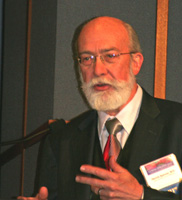 Dr. Spencer is the Harvey and Kate Cushing Professor and Chair of the Department of Neurosurgery at Yale University School
of Medicine. He is a graduate of Washington University School of Medicine and completed his neurosurgical residency at Yale
in 1977. He joined the Yale neurosurgery faculty following his residency, and became Chief of neurosurgery in 1987. He has
an international reputation in the surgical treatment of neurological diseases causing epilepsy and developed a widely used
neocortical sparing surgical approach for patients with temporal lobe epilepsy. His research has brought together basic scientists
and clinicians around a program concerning energetics, glutamate metabolism and the neurobiological study of human epileptogenic
tissue. Study techniques include 4T MRS, C13 intraoperative glucose turnover studies, and in vivo and in vitro electrophysiology
and microdialysis, immunohistochemistry, confocal and EM microscopy, and molecular biology. In particular, laboratory discoveries
are correlated with the epileptogenic substrate in order to help define human epilepsy pathogenesis and potential therapies.
Dr. Spencer was the 1999 recipient of the American Epilepsy Society's Research Award in Clinical Investigation, and the 2006
Society of Neurological Surgeons'Grass Award for Excellence in Research. He is past Chairman of the American Board of Neurological
Surgery, Vice Chairman of the Neurosurgery Residency Review Committee, incumbent President of both the American Epilepsy Society
(2008) and the Society of Neurological Surgeons, and he served as interim dean of the Yale School of Medicine 2003-2004.
Dr. Spencer is the Harvey and Kate Cushing Professor and Chair of the Department of Neurosurgery at Yale University School
of Medicine. He is a graduate of Washington University School of Medicine and completed his neurosurgical residency at Yale
in 1977. He joined the Yale neurosurgery faculty following his residency, and became Chief of neurosurgery in 1987. He has
an international reputation in the surgical treatment of neurological diseases causing epilepsy and developed a widely used
neocortical sparing surgical approach for patients with temporal lobe epilepsy. His research has brought together basic scientists
and clinicians around a program concerning energetics, glutamate metabolism and the neurobiological study of human epileptogenic
tissue. Study techniques include 4T MRS, C13 intraoperative glucose turnover studies, and in vivo and in vitro electrophysiology
and microdialysis, immunohistochemistry, confocal and EM microscopy, and molecular biology. In particular, laboratory discoveries
are correlated with the epileptogenic substrate in order to help define human epilepsy pathogenesis and potential therapies.
Dr. Spencer was the 1999 recipient of the American Epilepsy Society's Research Award in Clinical Investigation, and the 2006
Society of Neurological Surgeons'Grass Award for Excellence in Research. He is past Chairman of the American Board of Neurological
Surgery, Vice Chairman of the Neurosurgery Residency Review Committee, incumbent President of both the American Epilepsy Society
(2008) and the Society of Neurological Surgeons, and he served as interim dean of the Yale School of Medicine 2003-2004.
John W. Swann Ph.D.
Baylor College of Medicine
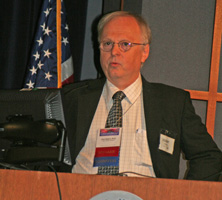 John W. Swann, Ph.D. is a Professor of Pediatrics, Neuroscience and Translational Biology and Molecular Medicine, Scientific
Director of the Gordon and Mary Cain Pediatric Neurology Research Foundation Laboratories at Texas Children's Hospital and
Director of the Interdepartmental Training Program, "Brain Disorders and Development" at Baylor College of Medicine. Dr. Swann
did his graduate training at the University of Maryland and did postdoctoral work in Neuroscience which was supported by NIH,
Grass Foundation and National Research Council postdoctoral fellowships. A Swedish Medical Research Council Fellowship supported
his initial studies in brain slice electrophysiology at University of Göteborg in Göteborg Sweden. Before joining the faculty
at Baylor in 1992, he was on the faculty at the State University of New York at Albany and a Senior Research Scientist at
the affiliated Wadsworth Center of the New York State Department of Health. Throughout his career, the primary focus of Dr.
Swann's research has been on understanding the basic mechanisms responsible for epilepsy in infants and young children and
the consequences recurring seizures have on brain development. Beginning with electrophysiological studies at the cellular
level, his research has evolved over the years to studies of the basic mechanisms that underlie epilepsy and learning and
memory deficits in animals that have experienced seizures in early-life. A common theme throughout his work has been how fundamental
differences in the properties of developing neurons and neuronal networks can explain why children are so prone to seizures
and why recurring seizures can have such profound consequences on the growth and maturation of the brain. Recent studies of
an animal model of Infantile Spasms are aimed at developing new therapies for this devastating childhood epilepsy. In addition
to the research of his laboratory, Dr. Swann has made other important contributions to the field of Epilepsy Research. He
has been Chairman of the Research and Training Committee of the American Epilepsy Society and chaired the Research Grants
Program of the Epilepsy Foundation of America. He has served on a number of NIH Study Sections and is currently Chairman of
the Developmental Brain Disorders Study Section at NINDS. Currently, he also serves as President of the American Epilepsy
Society and is Co-Chairman of the NIH Conference "Curing Epilepsy 2007: Translating Discoveries into Therapies". Dr Swann
has received numerous awards during his career including a Javits Neuroscience Investigator Award from the NIH.
John W. Swann, Ph.D. is a Professor of Pediatrics, Neuroscience and Translational Biology and Molecular Medicine, Scientific
Director of the Gordon and Mary Cain Pediatric Neurology Research Foundation Laboratories at Texas Children's Hospital and
Director of the Interdepartmental Training Program, "Brain Disorders and Development" at Baylor College of Medicine. Dr. Swann
did his graduate training at the University of Maryland and did postdoctoral work in Neuroscience which was supported by NIH,
Grass Foundation and National Research Council postdoctoral fellowships. A Swedish Medical Research Council Fellowship supported
his initial studies in brain slice electrophysiology at University of Göteborg in Göteborg Sweden. Before joining the faculty
at Baylor in 1992, he was on the faculty at the State University of New York at Albany and a Senior Research Scientist at
the affiliated Wadsworth Center of the New York State Department of Health. Throughout his career, the primary focus of Dr.
Swann's research has been on understanding the basic mechanisms responsible for epilepsy in infants and young children and
the consequences recurring seizures have on brain development. Beginning with electrophysiological studies at the cellular
level, his research has evolved over the years to studies of the basic mechanisms that underlie epilepsy and learning and
memory deficits in animals that have experienced seizures in early-life. A common theme throughout his work has been how fundamental
differences in the properties of developing neurons and neuronal networks can explain why children are so prone to seizures
and why recurring seizures can have such profound consequences on the growth and maturation of the brain. Recent studies of
an animal model of Infantile Spasms are aimed at developing new therapies for this devastating childhood epilepsy. In addition
to the research of his laboratory, Dr. Swann has made other important contributions to the field of Epilepsy Research. He
has been Chairman of the Research and Training Committee of the American Epilepsy Society and chaired the Research Grants
Program of the Epilepsy Foundation of America. He has served on a number of NIH Study Sections and is currently Chairman of
the Developmental Brain Disorders Study Section at NINDS. Currently, he also serves as President of the American Epilepsy
Society and is Co-Chairman of the NIH Conference "Curing Epilepsy 2007: Translating Discoveries into Therapies". Dr Swann
has received numerous awards during his career including a Javits Neuroscience Investigator Award from the NIH.
Arthur W. Toga, Ph.D.
David Geffen School of Medicine at UCLA
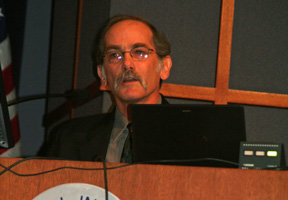 Arthur W. Toga, Ph.D., is a professor of neurology at UCLA, the founder and director of the Laboratory of Neuro Imaging,
Associate Director of the UCLA Brain Mapping Center, and the founding editor-in-chief of the journal, NeuroImage. He is the
chair of numerous committees within and outside of UCLA and is a member of the UCLA Brain Research Institute and past director
of admissions of the neuroscience graduate program. Dr. Toga's research is focused on neuroimaging, mapping brain structure
and function, and brain atlasing. He studies structural and functional relationships in normal, as well as pathological conditions
in populations using a variety of imaging approaches. Information from diverse methodologies is brought together using the
relationship to brain structure as the underlying unifying principle. The integration of these data can be used to generate
predictive paradigms in health and disease. He also studies cerebral metabolism and neurovascular coupling. He was trained
in neuroscience and computer science and has written more than 700 papers, including chapters, reviews, and 8 books. Recruited
to UCLA in 1987, he formed and directs the Laboratory of Neuro Imaging. This 100-member laboratory includes graduate students
and scientists from neurobiological disciplines, computer science, physics, mathematics, and others. Dr. Toga's laboratory
coordinates neuroimage analysis activities throughout the UCLA campus and with national and international collaborators and,
as such, is a worldwide resource. Dr. Toga has a career-long funding and publication record in neuroimaging, brain mapping,
and atlas construction in many species including humans, monkeys, rats, and mice. He has studied neuroanatomic variability
within specific subpopulations. Products of these efforts include anatomical descriptions and computer models describing the
degree to which morphometry differ in different regions of brain and in different subjects, cohorts, and developmental stages.
Spanning from cellular architectural morphology to whole brain systems, specific research projects focus on the developing
human brain and dementing diseases such as Alzheimer's, schizophrenia, brain tumor, depression, fetal alcohol syndrome, autism,
and other psychiatric and neurological diseases. This research has resulted in new statistical methods for quantitating structure/function
relationships, as determined in a variety of brain imaging modalities. He has developed unique mathematical techniques for
global and local warping of images and multidimensional modeling, as well as visualization of composite brain image sets (e.g.,
anatomy, histology, autoradiography, rate of change, and pharmacological variables). Dr. Toga has received numerous awards
and honors in computer science, graphics, and neuroscience. He received the SPIE image processing "cum laude" award, the Di
Chiro Award for Outstanding Scientific Researcher, and was a finalist in The American Medical Informatics Association 1997
best theoretical paper competition. He received the Smithsonian Award for Scientific Innovation in 1999.
Arthur W. Toga, Ph.D., is a professor of neurology at UCLA, the founder and director of the Laboratory of Neuro Imaging,
Associate Director of the UCLA Brain Mapping Center, and the founding editor-in-chief of the journal, NeuroImage. He is the
chair of numerous committees within and outside of UCLA and is a member of the UCLA Brain Research Institute and past director
of admissions of the neuroscience graduate program. Dr. Toga's research is focused on neuroimaging, mapping brain structure
and function, and brain atlasing. He studies structural and functional relationships in normal, as well as pathological conditions
in populations using a variety of imaging approaches. Information from diverse methodologies is brought together using the
relationship to brain structure as the underlying unifying principle. The integration of these data can be used to generate
predictive paradigms in health and disease. He also studies cerebral metabolism and neurovascular coupling. He was trained
in neuroscience and computer science and has written more than 700 papers, including chapters, reviews, and 8 books. Recruited
to UCLA in 1987, he formed and directs the Laboratory of Neuro Imaging. This 100-member laboratory includes graduate students
and scientists from neurobiological disciplines, computer science, physics, mathematics, and others. Dr. Toga's laboratory
coordinates neuroimage analysis activities throughout the UCLA campus and with national and international collaborators and,
as such, is a worldwide resource. Dr. Toga has a career-long funding and publication record in neuroimaging, brain mapping,
and atlas construction in many species including humans, monkeys, rats, and mice. He has studied neuroanatomic variability
within specific subpopulations. Products of these efforts include anatomical descriptions and computer models describing the
degree to which morphometry differ in different regions of brain and in different subjects, cohorts, and developmental stages.
Spanning from cellular architectural morphology to whole brain systems, specific research projects focus on the developing
human brain and dementing diseases such as Alzheimer's, schizophrenia, brain tumor, depression, fetal alcohol syndrome, autism,
and other psychiatric and neurological diseases. This research has resulted in new statistical methods for quantitating structure/function
relationships, as determined in a variety of brain imaging modalities. He has developed unique mathematical techniques for
global and local warping of images and multidimensional modeling, as well as visualization of composite brain image sets (e.g.,
anatomy, histology, autoradiography, rate of change, and pharmacological variables). Dr. Toga has received numerous awards
and honors in computer science, graphics, and neuroscience. He received the SPIE image processing "cum laude" award, the Di
Chiro Award for Outstanding Scientific Researcher, and was a finalist in The American Medical Informatics Association 1997
best theoretical paper competition. He received the Smithsonian Award for Scientific Innovation in 1999.
David C. Van Essen, Ph.D
Washington University in St. Louis
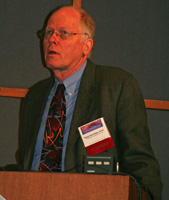 David Van Essen is Edison Professor of Neurobiology and Head of the Department of Anatomy &ap Neurobiology at Washington
University School of Medicine, St. Louis, Missouri. Dr. Van Essen graduated from Caltech and did his doctoral training in
the Neurobiology Department at Harvard. After postdoctoral fellowships in Boston under Drs. David Hubel and Torsten Wiesel
and in Norway and England, he joined the faculty of Caltech in 1976. In 1992 he moved to Washington University in St. Louis.
Dr. Van Essen is internationally known for his research on the structure, function, and development of the cerebral cortex.
He has contributed to our understanding of how the visual cortex processes information about shape, motion and color and how
attention affects neural activity. He has helped demonstrate that visual cortex includes dozens of distinct areas organized
as a distributed hierarchy, with information flowing through hundreds of neural pathways. His theory of tension-based morphogenesis
provides a leading hypothesis for how and why the cerebral cortex folds and how other neural structures develop their distinctive
shapes. In recent years, Dr. Van Essen has become a leader in the emerging field of neuroinformatics by developing and applying
new methods of computerized brain mapping. He and his colleagues have generated atlases of cerebral and cerebellar cortex
for human, macaque, mouse, and rat, have populated these atlases with extensive experimental data, and have made these data
freely available via the SumsDB database. His studies using the PALS human cortical atlas provide state-of-the-art characterizations
of variability among normal individuals, specific abnormalities in disease conditions (autism, Williams Syndrome, and schizophrenia),
and patterns of cortical development in preterm infants. Dr. Van Essen has provided exemplary service to the neuroscience
community. He was editor-in-chief of the Journal of Neuroscience (1994-1998) and served as founding chair of the International
Organization for Human Brain Mapping (1996). He is currently President of the Society for Neuroscience and has previously
served as Councilor and Secretary. He is also the President of the Association of Medical School Neuroscience Department Chairs
and on the Council of NINDS. He is a fellow of the American Association for the Advancement of Science, and has received the
Raven Lifetime Achievement Award from the St. Louis Academy of Sciences.
David Van Essen is Edison Professor of Neurobiology and Head of the Department of Anatomy &ap Neurobiology at Washington
University School of Medicine, St. Louis, Missouri. Dr. Van Essen graduated from Caltech and did his doctoral training in
the Neurobiology Department at Harvard. After postdoctoral fellowships in Boston under Drs. David Hubel and Torsten Wiesel
and in Norway and England, he joined the faculty of Caltech in 1976. In 1992 he moved to Washington University in St. Louis.
Dr. Van Essen is internationally known for his research on the structure, function, and development of the cerebral cortex.
He has contributed to our understanding of how the visual cortex processes information about shape, motion and color and how
attention affects neural activity. He has helped demonstrate that visual cortex includes dozens of distinct areas organized
as a distributed hierarchy, with information flowing through hundreds of neural pathways. His theory of tension-based morphogenesis
provides a leading hypothesis for how and why the cerebral cortex folds and how other neural structures develop their distinctive
shapes. In recent years, Dr. Van Essen has become a leader in the emerging field of neuroinformatics by developing and applying
new methods of computerized brain mapping. He and his colleagues have generated atlases of cerebral and cerebellar cortex
for human, macaque, mouse, and rat, have populated these atlases with extensive experimental data, and have made these data
freely available via the SumsDB database. His studies using the PALS human cortical atlas provide state-of-the-art characterizations
of variability among normal individuals, specific abnormalities in disease conditions (autism, Williams Syndrome, and schizophrenia),
and patterns of cortical development in preterm infants. Dr. Van Essen has provided exemplary service to the neuroscience
community. He was editor-in-chief of the Journal of Neuroscience (1994-1998) and served as founding chair of the International
Organization for Human Brain Mapping (1996). He is currently President of the Society for Neuroscience and has previously
served as Councilor and Secretary. He is also the President of the Association of Medical School Neuroscience Department Chairs
and on the Council of NINDS. He is a fellow of the American Association for the Advancement of Science, and has received the
Raven Lifetime Achievement Award from the St. Louis Academy of Sciences.
Peter Wolf, M.D.
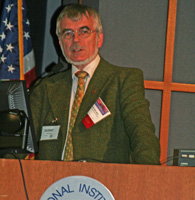 Born 1938, graduated from Heidelberg University, Germany, in 1963. PhD in Berlin 1977 with thesis on Psychoses with Epilepsy.
Associate Professor of Neurology at Berlin University until 1985. 1985-2003 Medical Head of the Epilepsy Centre Bethel, Bielefeld.
Since October 2003, Professor of Neurology / Epilepsy Research at Copenhagen University/ National Hospital, Copenhagen, and
Epilepsy Centre Filadelfia, Dianalund, Denmark. President of the German Chapter of the ILAE 1987 1989. President of the German
EEG Society, 1994-1995. Chairman of the Commission on Classification and Terminology of the International League Against Epilepsy,
1981 1986. As Chair of the European Epilepsy Academy EUREPA since 1996 development of widespread activities for the professional
education in epilepsy. Secretary General of the International League Against Epilepsy 1993 2001. ILAE President for 2005-2009.
Distinctions: Ambassador for Epilepsy 1982; European Epileptology Award 2002; Dr.h.c. of the Russian Academy of Medical Sciences
2005. Research interest in all clinical and comprehensive care aspects of epilepsy. Present research objects: Reflex epilepsies;
dynamics of the therapeutic threshold; nosology of the epilepsies; cultural history of epilepsy.
Born 1938, graduated from Heidelberg University, Germany, in 1963. PhD in Berlin 1977 with thesis on Psychoses with Epilepsy.
Associate Professor of Neurology at Berlin University until 1985. 1985-2003 Medical Head of the Epilepsy Centre Bethel, Bielefeld.
Since October 2003, Professor of Neurology / Epilepsy Research at Copenhagen University/ National Hospital, Copenhagen, and
Epilepsy Centre Filadelfia, Dianalund, Denmark. President of the German Chapter of the ILAE 1987 1989. President of the German
EEG Society, 1994-1995. Chairman of the Commission on Classification and Terminology of the International League Against Epilepsy,
1981 1986. As Chair of the European Epilepsy Academy EUREPA since 1996 development of widespread activities for the professional
education in epilepsy. Secretary General of the International League Against Epilepsy 1993 2001. ILAE President for 2005-2009.
Distinctions: Ambassador for Epilepsy 1982; European Epileptology Award 2002; Dr.h.c. of the Russian Academy of Medical Sciences
2005. Research interest in all clinical and comprehensive care aspects of epilepsy. Present research objects: Reflex epilepsies;
dynamics of the therapeutic threshold; nosology of the epilepsies; cultural history of epilepsy.
Elias Zerhouni, M.D.
Director, National Institutes of Health
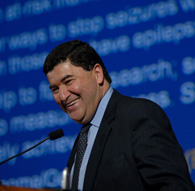 Elias A. Zerhouni, M.D., is the Director of the National Institutes of Health (NIH), the nation's medical research agency.
Transforming medicine and health through discovery, this federal agency is part of the Department of Health and Human Services.
NIH supports peer-reviewed basic, clinical and translational scientific research at more than 3,000 universities, medical
schools, hospitals, and research institutions throughout the 50 states and overseas. Approximately 83% of the budget supports
the work of some 325,000 extramural scientists and research staff at those sites. Additionally, NIH supports 6,000 intramural
scientists in its own laboratories. The agency trains research investigators and develops and disseminates credible health
information based on scientific discovery to scientists, medical and health professionals, patients, families, industry, and
the public. NIH has 27 Institutes and Centers and a fiscal year 2006 budget of $28.6 billion. At NIH, Dr. Zerhouni has initiated
the NIH Roadmap for Medical Research, led the effort to transform the medical research enterprise, supported trans-NIH initiatives
in obesity and neuroscience research, launched the NIH Pathway to Independence Awards designed to bridge new scientists from
mentored support to independent research careers, established and supported initiatives to reduce health disparities, and
ensured public access to NIH-funded research results. Dr. Zerhouni has spent his career providing clinical, scientific, and
administrative leadership. Prior to joining the NIH, Dr. Zerhouni served as executive vice-dean of Johns Hopkins University
School of Medicine. Dr. Zerhouni earned his medical degree at the University of Algiers School of Medicine, completing his
residency in diagnostic radiology at Johns Hopkins in 1978 as chief resident. He has won a Gold Medal from the American Roentgen
Ray Society and two Paul Lauterbur Awards. His research in imaging led to advances in Computerized Axial Tomography (CAT scanning)
and Magnetic Resonance Imaging (MRI). He is the author of 185 peer-reviewed publications and holds 8 patents. Dr. Zerhouni
served on the National Cancer Institute's Board of Scientific Advisors from 1998-2002. In 1988, he was a consultant to the
World Health Organization, and in 1985 he was a consultant to the White House under President Ronald Reagan. He has been a
member of the Institute of Medicine since 2000.
Elias A. Zerhouni, M.D., is the Director of the National Institutes of Health (NIH), the nation's medical research agency.
Transforming medicine and health through discovery, this federal agency is part of the Department of Health and Human Services.
NIH supports peer-reviewed basic, clinical and translational scientific research at more than 3,000 universities, medical
schools, hospitals, and research institutions throughout the 50 states and overseas. Approximately 83% of the budget supports
the work of some 325,000 extramural scientists and research staff at those sites. Additionally, NIH supports 6,000 intramural
scientists in its own laboratories. The agency trains research investigators and develops and disseminates credible health
information based on scientific discovery to scientists, medical and health professionals, patients, families, industry, and
the public. NIH has 27 Institutes and Centers and a fiscal year 2006 budget of $28.6 billion. At NIH, Dr. Zerhouni has initiated
the NIH Roadmap for Medical Research, led the effort to transform the medical research enterprise, supported trans-NIH initiatives
in obesity and neuroscience research, launched the NIH Pathway to Independence Awards designed to bridge new scientists from
mentored support to independent research careers, established and supported initiatives to reduce health disparities, and
ensured public access to NIH-funded research results. Dr. Zerhouni has spent his career providing clinical, scientific, and
administrative leadership. Prior to joining the NIH, Dr. Zerhouni served as executive vice-dean of Johns Hopkins University
School of Medicine. Dr. Zerhouni earned his medical degree at the University of Algiers School of Medicine, completing his
residency in diagnostic radiology at Johns Hopkins in 1978 as chief resident. He has won a Gold Medal from the American Roentgen
Ray Society and two Paul Lauterbur Awards. His research in imaging led to advances in Computerized Axial Tomography (CAT scanning)
and Magnetic Resonance Imaging (MRI). He is the author of 185 peer-reviewed publications and holds 8 patents. Dr. Zerhouni
served on the National Cancer Institute's Board of Scientific Advisors from 1998-2002. In 1988, he was a consultant to the
World Health Organization, and in 1985 he was a consultant to the White House under President Ronald Reagan. He has been a
member of the Institute of Medicine since 2000.
Last updated September 10, 2008



